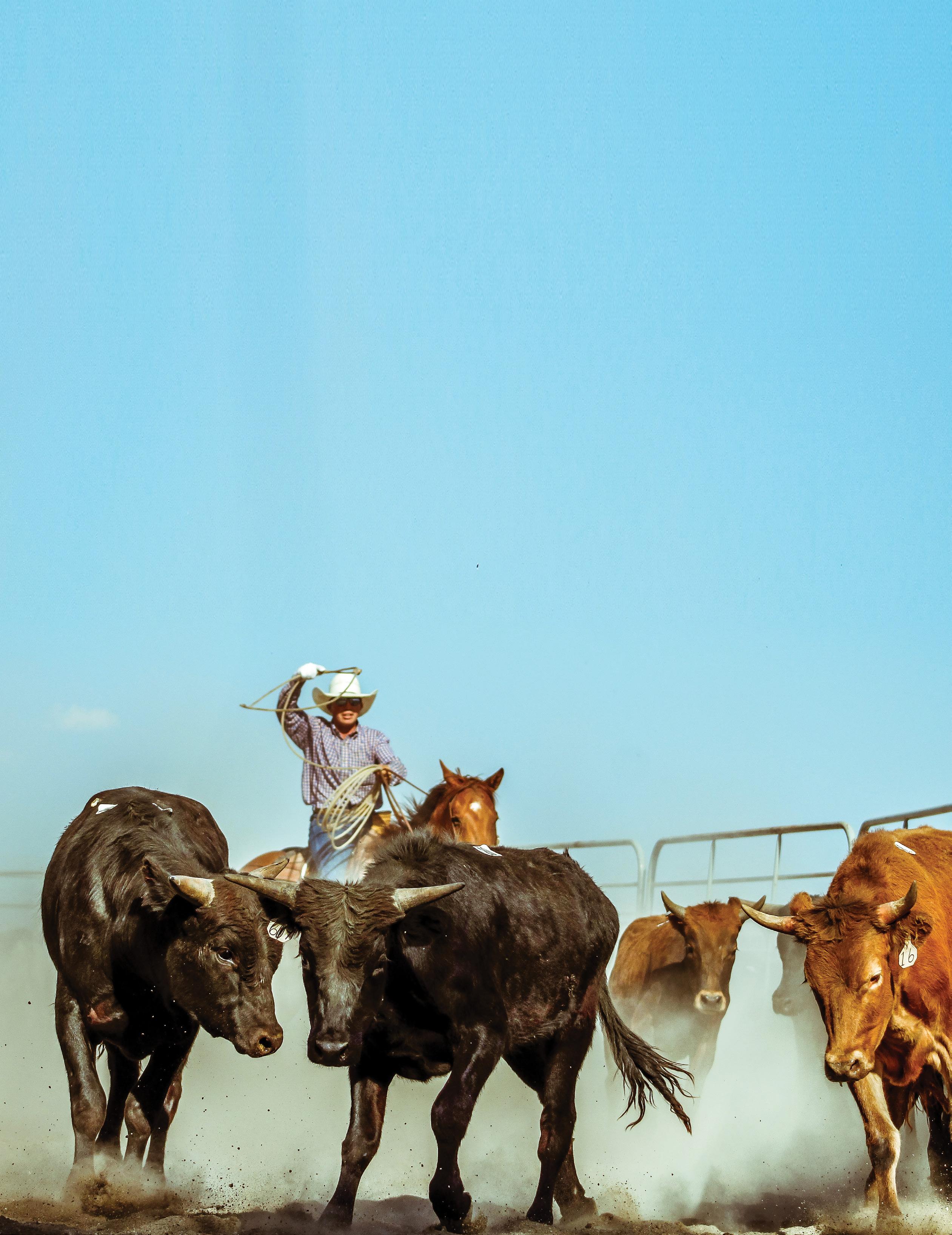
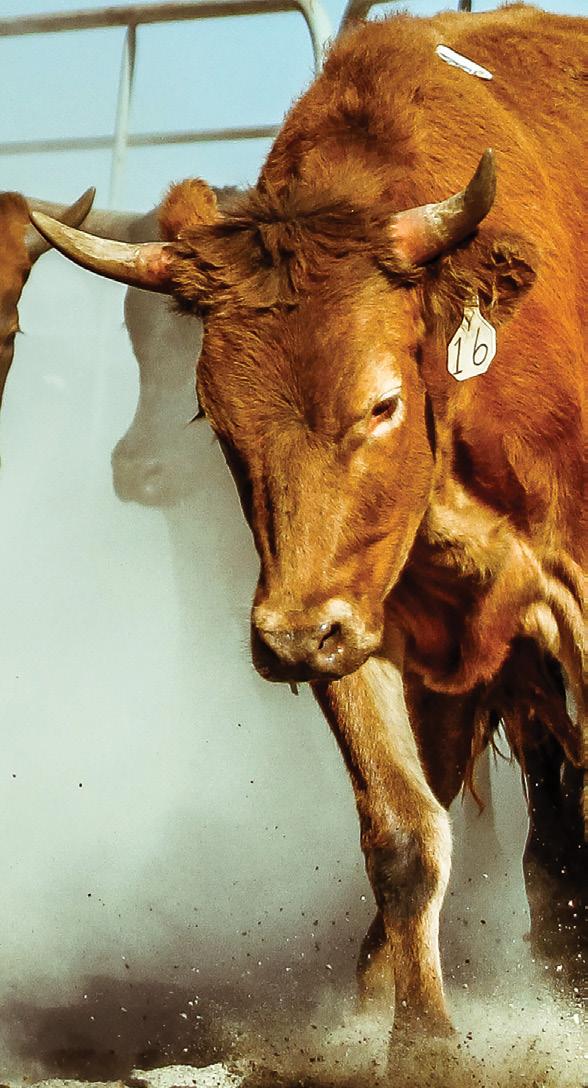

TASTE OUR PLACE HIGHLIGHTING FRESH LOCAL FOOD ANSWERING THE CALL VOLUNTEERING BIG IN BIG TIMBER A DAY IN THE LIFE OF A YOUNG MONTANA RANCHER JAKE BROWN LOVES LIVING LARGE ON FAMILY RANCH CANTY BOOTS NOT YOUR ORDINARY BOOTS OR BOOT MAKER FALL 2019 Ranch Rodeos TURNING DAILY WORK INTO COMPETITION AND CAMARADERIE

C & B Operations - Billings is Your Local John Deere Dealer with the Parts, Tools, Service, and New and Used Equipment for Your Residential and Operational Needs. VISIT US ONLINE AT DEEREQUIPMENT.COM (406) 248-7787 | 5121 Midland Rd, Billings, MT C & B OPERATIONS - BILLINGS, MT SHOWING UP FOR YOU. SEASON AFTER SEASON.
The
WHERE’S THE BEEF?
Sweet Grass County brings beef to school
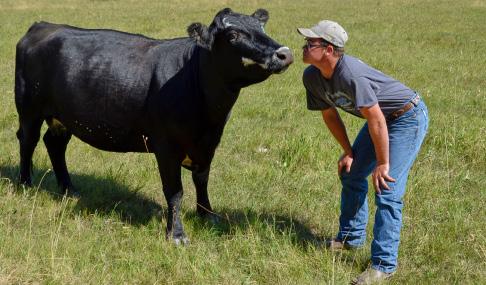
RANCH RODEOS
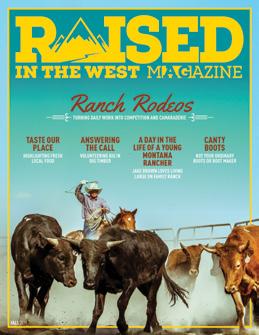
Competing for bragging rights to be the best
JEAN’S CUISINES
Published cookbook author offers up her
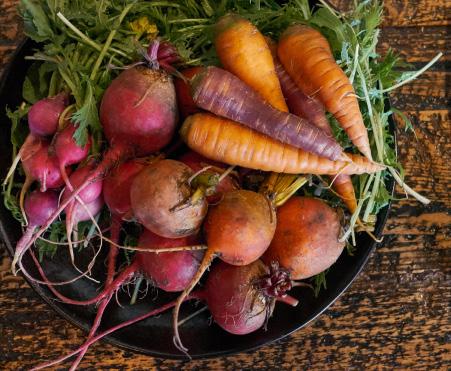
DRESS THE HORSE!
NEW SHOES AND HAPPY HOOVES
Farrier plays an important part in equine care
BEAUTIFUL BLANKETS ARE LOOMING
K.T. Monson, loves weaving unique saddle blankets
SITTING HIGH AND HANDSOME
That’s what you do in one of Ben Swanke’s saddles
CINCHING UP BEAUTY
Tia Watson turns passion-filled hobby into business
406-860-0292
EDITOR
KOERBER
KEMMICK
HOEFLE 406-860-0292
publisher@raisedinthewest.com
DESAVEUR 406-321-2331
shari@raisedinthewest.com
Living large on family
Winifred
NOT YOUR ORDINARY BOOTS, OR BOOT MAKER
Canty Boots owner kicks up success
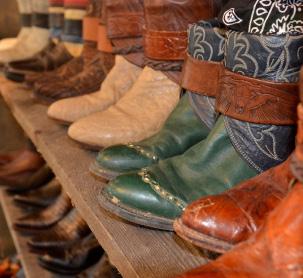
BTVFD go above
THE
OUT AND ABOUT Scenes captured around the region this summer!
contents FALL 2019 COVER DAHL WALTON HEADING FOR A CATCH PHOTOGRAPHY BY MCKENZIE HOLMBERG 8 4018 8 TASTE OUR PLACE
sign that ingredients are fresh and local 12
16
favorite recipes 18 A DAY IN THE LIFE OF A YOUNG MONTANA RANCHER
ranch in
24 ANSWERING
CALL
and beyond the call 28
34
40
46
PUBLISHER CYD & STU HOEFLE
// publisher@raisedinthewest.com COPY
JULIE
ED
ADVERTISING CYD
//
SHARI
//
DESIGN MELANIE FABRIZIUS ads@raisedinthewest.com ADDRESS RAISED IN THE WEST PO Box 80267 // Billings, MT 59108 ©2019 Peaks to Prairie Media All rights reserved. No part of this publication may be reproduced without written permission from the publisher. Watch for our • DIGITAL MAGAZINE • coming this fall on our website! www.raisedinthewest.com FOLLOW US! 4 // www.raisedinthewest.com



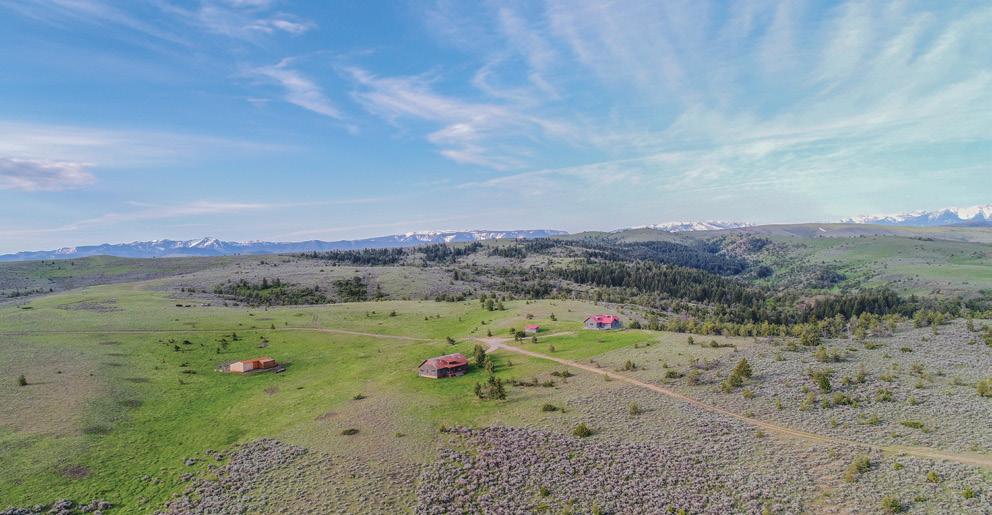

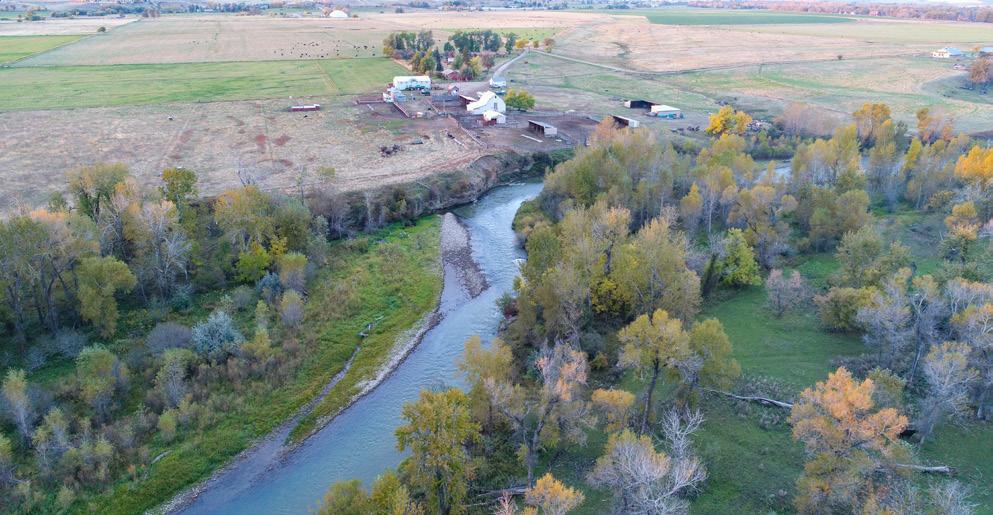
WE KNOW MONTANA. Your 3rd generation, locally owned and operated, hometown, full service Real Estate team, serving you for over 30 years. Lane's End on the Yellowstone • 51 +/- acres • $1,299,000 RECREATION
a note from the new owners
We can’t believe it! With the help of a lot of people, we printed our first issue of Raised in the West! If someone would have told us a year ago that this is what we’d be doing, we would have said, “You’re crazy!” But here we are and we couldn’t be more excited. That old adage of being at the right place at the right time couldn’t ring more true.
We have very high hopes for RITW and spent the last three months crisscrossing Montana and Wyoming, meeting writers, photographers and advertisers and looking for stories to tell. We found nuggets in every place we visited! We found ourselves looking at this out west lifestyle with a whole new appreciation and an excitement to share it.
Cyd is a fourth-generation Montana girl, raised on a ranch on the banks of the Yellowstone River. She has a passion for writing, telling a good story and getting to know the people behind the story. She grew up with writers, as her mom and sister were both writers and publishers and her niece is an editor as well. Cyd is a glass half-full person and is always looking for a positive angle to capture - be it a story, a photo or a memory.
Stu has an adventurous outdoor spirit. He was born into a family of four boys, with a dad that was determined his boys would experience all that Montana has to offer. He grew up hunting, fishing, camping, and skiing. He enjoys Montana living. He learned photography, shooting Kodachrome slides from a 35mm camera, back in the days when he felt lucky to have three rolls of film and it took a week to develop. Stu raised his family just as his dad did, experiencing all that Montana has to offer.
Together we, and the team behind the success of the magazine, hope to bring you interesting, fun, authentic, colorful stories and photos that exemplify the grit and gumption of the west. We’d like to thank the contributors listed below for their encouragement, talent and willingness to help us. We also send a hardy thank you to all the loyal advertisers who have been a pleasure to get to know. And to you the readers, we hope you enjoy our journey!
contributors
ED KEMMICK COPY EDITOR
Ed Kemmick has been a newspaper editor and reporter in Montana for more than 35 years. He worked for 25 years at the Billings Gazette and from 2014 to 2018 he ran Last Best News, an online newspaper based in Billings. He plans to publish “Montana: The Lay of the Land,” a collection of Last Best News stories, this fall.
AMY GRISAK WRITER
Amy Grisak balances her life between the mountains and the prairie looking for stories that catch her interest. This award-winning writer shares what she loves with readers, whether it’s finding gorgeous hikes in Glacier National Park or how to push the gardening envelope in our challenging Montana climate. Her two sons, Samuel and John, are her sidekicks in the field, and her husband, Grant, raises honey bees to assist in the effort. You can follow Amy’s endeavors on her website, amygrisak.com
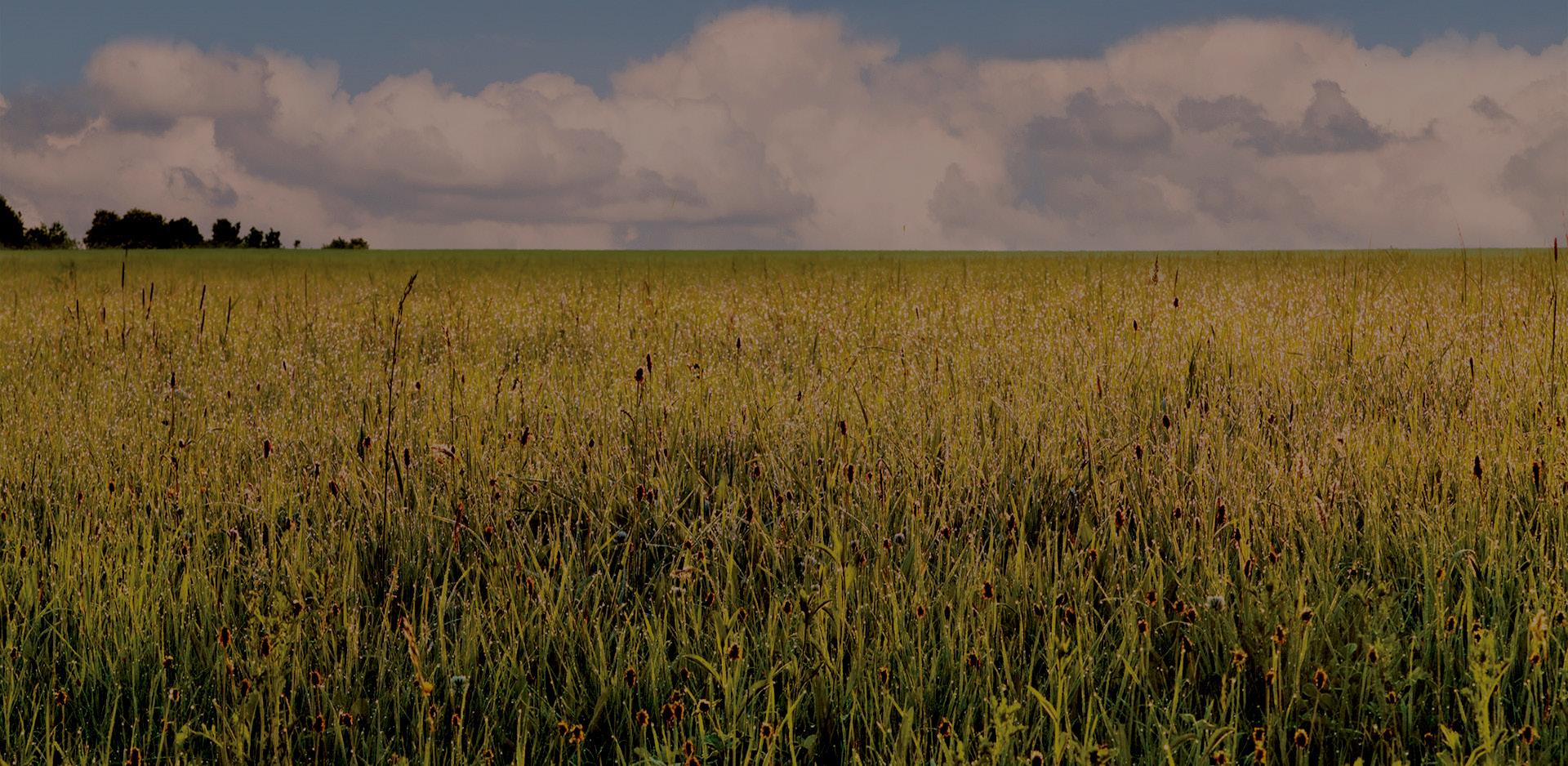


JEAN PETERSEN
WRITER
Jean is a cookbook and children’s picture book author, freelance writer and weekly columnist with Western Ag Reporter for over 15 years. She and her husband live near the Beartooth Mountains in Red Lodge with their four children. Most days she can be found outdoors with her animals or on a hike, at her children’s activities, or cozying up writing and reading. You can find her at www. jeanpetersen.com.
MELANIE HOEFLE CONTENT MANAGER
Melanie Hoefle is a fifth generation Montanan with a marketing degree from UW. She has experience doing content management and social media content. Her love of the outdoors has taken her across the country visiting national parks and writing about her adventures.
SHARI DESAVEUR SALES
Shari DeSaveur is a wife, mom, and grandmother, and living proof that you can take the girl off the farm, but not get the farm out of the girl! Shari resides in the Stillwater Valley on a small acreage with her husband, dogs, horses, chickens, and more often than not; a few of her grandchildren! After experiencing living overseas Shari has discovered there truly is no place like home in Montana.
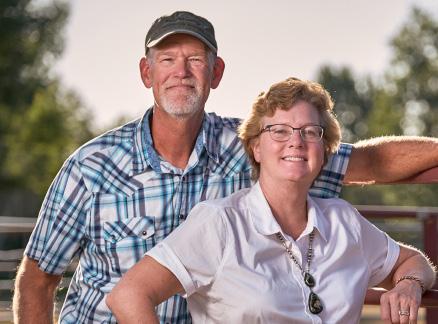
MELANIE FABRIZIUS
GRAPHIC DESIGN
Melanie was raised on a farm on the banks of the Clarks Fork River in Belfry, MT. Her life-long love of art led her to a career as a freelance graphic designer. When she’s not busy working, Melanie enjoys being with family, spending time with her dogs, camping, ATVing, collecting rocks and watching the sunset.
LISA SYDES WEB DESIGN


Lisa Sydes is a recent west-coast transplant, with a background in Advertising and Graphic Design. She has a passion for digital marketing, and everything that pertains to it. From website design to branding and everything in between, you will often find Lisa sketching up her latest ideas or thinking up innovative ways to solve a problem. Lisa is happy to be a part of the new Raised in the West team, and excited to see what it has in store for the future.
KENZIE HOLMBERG PHOTOGRAPHER
Kenzie Holmberg is a creative entrepreneur and operates her own business, KNZ Design & Marketing. She also recently started working for the NILE as the Equine Programs & Communications Director in May of 2019. She is committed to promoting the western way of life and sharing it with the world. Check out her website at knzcreativedesigns.com and follow her on Instagram: @kenzieholmberg and @ knzdesignmarketing
KAYLA SARGENT PHOTOGRAPHER
Kayla Sargent grew up on fifthgeneration cattle ranch in Montana where a passion for the agriculture industry was instilled. Combining that with a love for photography and writing landed her in the field of ag communications. Currently serving as the editor of the Western Ag Reporter, Kayla feels her role in helping the ranching community be sustainable is through communication and education that serves and connects both the rancher and consumer.
JUSTIN SHEELY PHOTOGRAPHER
Justin is a student at Yellowstone Christian College and a freelance photographer in Billings, Montana. He worked as an award-winning photojournalist in Sheridan, Wyoming. His background is rich in photography. He strives to capture candid moments that tell a story and evoke emotion. His wife, Hannah, is a creative writer and their daughter, Elly, keeps them busy.
6 // www.raisedinthewest.com










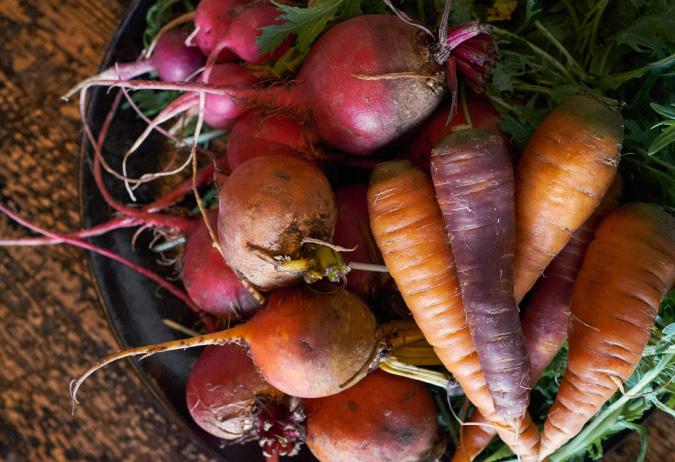
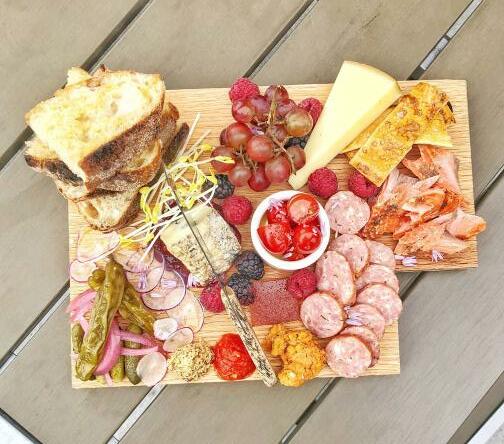


ACROSS MONTANA WRITTEN BY AMY GRISAK // PHOTOGRAPHY BY JUSTIN SHEELY, AMY GRISAK & THE FIELDHOUSE PlaceTaste OUR THE SIGN OF FRESH AND LOCALLY SOURCED INGREDIENTS 8 // www.raisedinthewest.com
The culinary scene in Montana is as spectacular as its scenery. With the Taste Our Place program, visitors and locals have the opportunity to connect with the agricultural heart — and flavor — of the state.
Launched in 2018, the program has more than 100 participating restaurants, bars and other food-related businesses across the state that specifically use Montana-sourced ingredients in their menus.


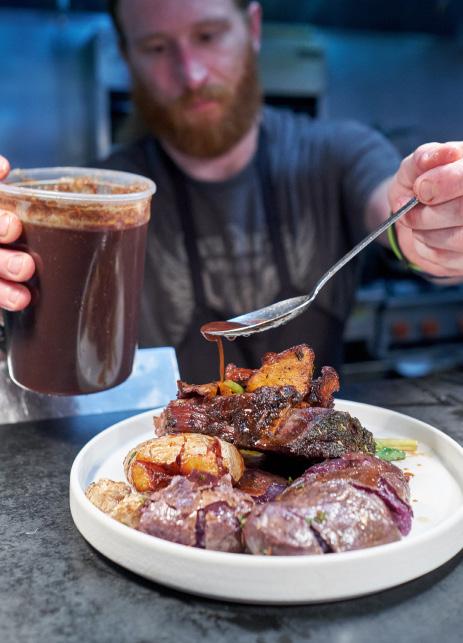

“We know that visitors seek out authentic Montana goods and products, and Montanans also want to support local producers,” said Emilie Saunders, the director of communications and public affairs at the Montana Department of Commerce. “Taste Our Place is a collaboration between the Montana Departments of Commerce and Agriculture meant to further strengthen the connection among farmers, ranchers, restaurateurs, brewers and beverage makers.”
—CHELSI BAY OF THE MONTANA DEPARTMENT OF AGRICULTURE
In a state where agriculture is the largest industry in the state, Taste Our Place brings the hard work of the farmers and ranchers to the millions of people who visit Montana each year.
Saunders noted that in a 2018 study, the University of Montana’s Institute for Tourism and Travel Research estimated 12.4 million people traveled to Montana and spent $668 million on food and beverages.
Montana is well-known for its world-class wheat, barley, pulse crops and beef, but increased demand for different ingredients allows producers to expand what they grow. Beyond the traditional items, specialty crops are expanding agricultural possibilities, and diversification makes Montana farms and ranches stronger in the long run.
“Diversifying crops can help farmers survive difficult economic times by expanding access to new and different markets,” said Chelsi Bay of the Montana Department of Agriculture. “Growing more than a primary crop protects the farmer from relying on
“Diversifying crops can help farmers survive difficult economic times by expanding access to new and different markets...”
DAVID MANGER, LINE COOK FOR THE FIELDHOUSE PUTS FINISHING TOUCHES ON A PLATE
FALL 2019 // 9
profits from an exclusive market. Traditional wheat and barley growers, especially, have benefited from diversifying and growing pulse crops. Some plant pulse crops rotationally while others have turned pulses into a cash crop.”
Cattle reign in Montana, and regional producers offer exceptional, homegrown quality when it comes to all cuts of beef.
In a video posted on the website of the Fieldhouse Restaurant, owner Ben Harman said, “The hamburger is a staple in American foods. You can get it anywhere, at any level of quality, at any level of complication. But the right hamburger has to be done right. No more, no less, just the sum of all its parts.”
Ben and his wife, Krystal, are committed to using as much locally sourced meat, produce and dairy products as they can at their popular restaurant, located in Billings. They are proud to be members of Taste our Place, which promotes that very idea.
“Food in its original form can’t be replicated,” Krystal said, “The flavor profile, the freshness, the color. There is no substitute.”
—KRYSTAL HARMAN
family-operated business in the Flathead Valley that is well-known for its cream-on-top milk, along with fresh cream, half-and-half and Greek yogurt.
Zuidema said all the cheeses are Montana-made, their eggs are local and whenever the season allows, they acquire their greens from Resurrection Ranch out of Cascade.
The slightly sweet, nutty-flavored Kamut Khorasan wheat is from Kamut International in Big Sandy, part of what makes their homemade breads so memorable. And besides the Kamut Khorasan wheat, the rest of their unbleached wheat is also Montana-grown. Even their Kurabota pork, typically in the form of ham for their sandwiches, is from a Belgrade farm that specializes in heritage breeds.
Since coffee and chocolate are not grown in Montana, they strive to make it as local as possible. Zuidema said the chocolate is from a Missoula chocolatier and the coffee is sourced through a Montana buyer who works directly with the coffee growers. The crew at Al Banco’s takes it from there.
“We roast our own coffee,” he said.
And while cattle is still king, more eateries look toward other options of Montana-sourced protein to add regional flare to the menu. Chalet Market of Montana offers elk and bison in its snack sticks, and Hops Downtown Grill in Kalispell incorporates regional beef, as well as Montana-raised elk and yak.
This connection between the growers and those that turn these premium ingredients into something delicious is what inspires many food-related businesses to take part in the program.
“We wanted to be part of something to promote anything local,” said Jesse Zuidema, who co-owns Al Banco Coffee & Modern Bistro with his brother, Jake, in Great Falls. Al Banco is known for its exceptional breakfasts, including avocado toast served with local eggs, cheese, and greens on homemade bread, to delicious pastas, in addition to the coffee selections they raise to an art form.
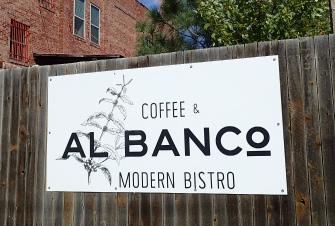

What makes their food even more special is their reliance on Montana-grown or Montana- sourced ingredients. “Anything we can find, we use it,” Zuidema said.
All of their dairy products originate from Kalispell Kreamery, a
This also holds true for The Fieldhouse Restaurant. The Harmans pride themselves on sourcing locally by using local ranchers and farmers for their products. Beef comes from the Kraft Ranch at Laurel, cheese and dairy products from Lifeline Creamery in Victor, specialty meats from Project Meats in Huntley, organic eggs are collected locally, fresh vegetables from Kate’s Garden, a small organic farm in Billings and lettuce and fresh greens come from local aquaponics greenhouse, Swanky Roots.
“We use local ingredients for everything possible,” Krystal said. “We make our own ketchup, mayonnaise and all our salad dressings. Our bakery uses wheat grown in Montana. We want people to take note of the fact that there is a difference in the quality of ingredients used for their food, and locally sourced is a standard that we hope they gravitate toward and appreciate.”
Zuidema said he appreciates the Taste Our Place program because it was spearheaded at the state level and actively promotes the businesses.
“They did videos and social media,” he said. “It was really well done.”
“Food in its original form can’t be replicated. The flavor profile, the freshness, the color. There is no substitute.”
AL
BANCO’S SIGNATURE AVOCADO TOAST 10 // www.raisedinthewest.com
It made a difference in their business, as well. “There was an immediate response,” he said, and people continue to search them out to enjoy and support the taste of Montana.
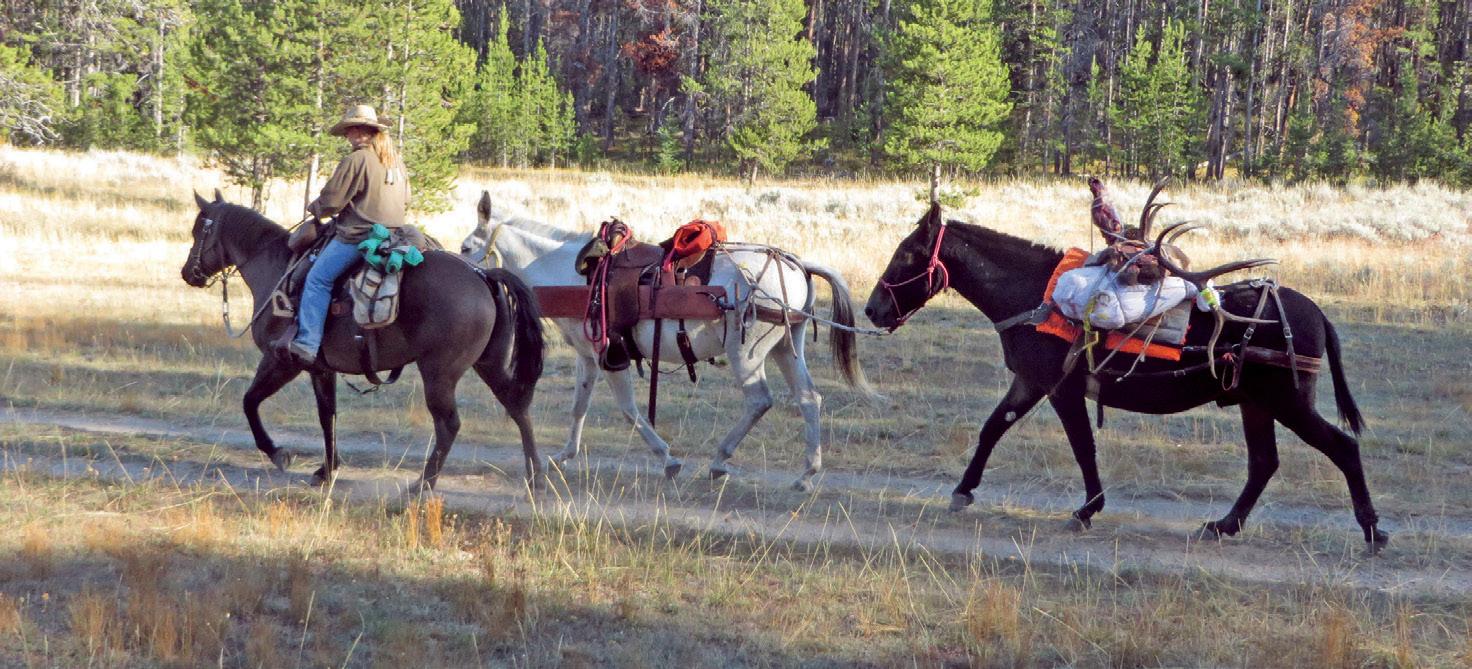

“Restaurants wear their Taste Our Place logo proudly,” said Saunders. “Look for a Taste Our Place sticker in the window, a mention in the menu, or table tents displayed at the location.”


She said anyone interested in finding participating businesses can check the Made in Montana program’s website at madeinmontanausa.com/eatdrink.
Montana farmers and ranchers raise some of the best food in the world, and the Taste Our Place program spotlights these delicious flavors for everyone to enjoy.
Public Lands?

Forage is REQUIRED!
Forage is REQUIRED!
Forage is REQUIRED!
Visit: agr.mt.gov to find certified noxious weed


agr.mt.gov to find certified noxious weed



to find certified noxious weed
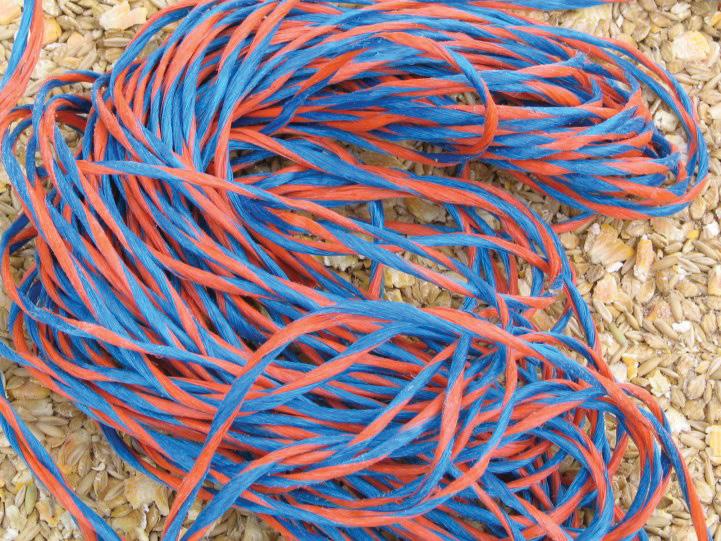

free hay, straw, pellets, and cubes with these markers:Certified Forage is REQUIRED!
hay, straw, pellets, and cubes with these markers:
hay, straw, pellets, and cubes with these markers:
Visit AGR.MT.GOV to find certified noxious weed seed free hay, straw, pellets, and cubes with these markers:


Hunting on Public Lands? Certified
agr.mt.gov
free
Hunting on Public Lands? Certified
free
Hunting on
Certified
Visit:
Hunting on Public Lands?
Launched in 2018, the program has more than 100 PARTICIPATING RESTAURANTS, BARS AND OTHER FOOD-RELATED BUSINESSES across the state that specifically use MONTANA-SOURCED INGREDIENTS in their menus. THE FIELDHOUSE’S RENOWNED LOCALLY SOURCED BURGER FALL 2019 // 11
Where’s the
BEEF?
 SWEET GRASS COUNTY
WRITTEN BY CYD HOEFLE // PHOTOGRAPHY BY STU HOEFLE
SWEET GRASS COUNTY BRINGS BEEF TO SCHOOL
SWEET GRASS COUNTY
WRITTEN BY CYD HOEFLE // PHOTOGRAPHY BY STU HOEFLE
SWEET GRASS COUNTY BRINGS BEEF TO SCHOOL
12 // www.raisedinthewest.com
As Yelena Mathias served up a fresh batch of chili to the high school students at Sweet Grass County High School in Big Timber, the teens digging into the hot meal had an appreciation of just how this tasty meal ended up on their plates.
Almost three years ago, the Crazy Peak Cattlewomen, an agricultural cooperative in Sweet Grass County, started developing ways to educate local students about agriculture. One of the most innovative programs they started is with the hot lunch program. The ranch women collaborated with the school board, the lunch program, local ranchers and the local meat processor to establish a program called “Beef to School.” Quite simply, all the beef served in the school’s lunch program is locally raised and donated.
“It has literally changed our lunch program,” said Cindy Bainter, head cook for both Sweet Grass County High School and Big Timber Elementary School. “Last year alone, we received 3,500 pounds of beef for our menus. We’ve broadened what we do with our beef and almost tripled our fruit and vegetable budget because of what we save by not having to buy beef.”

Cindy, Yelena and the rest of the crew feed 320 kids every day. The donated beef has expanded their menu beyond the favorite, traditional taco and chili dishes to include meatloaf, meatballs and beef stir fry.
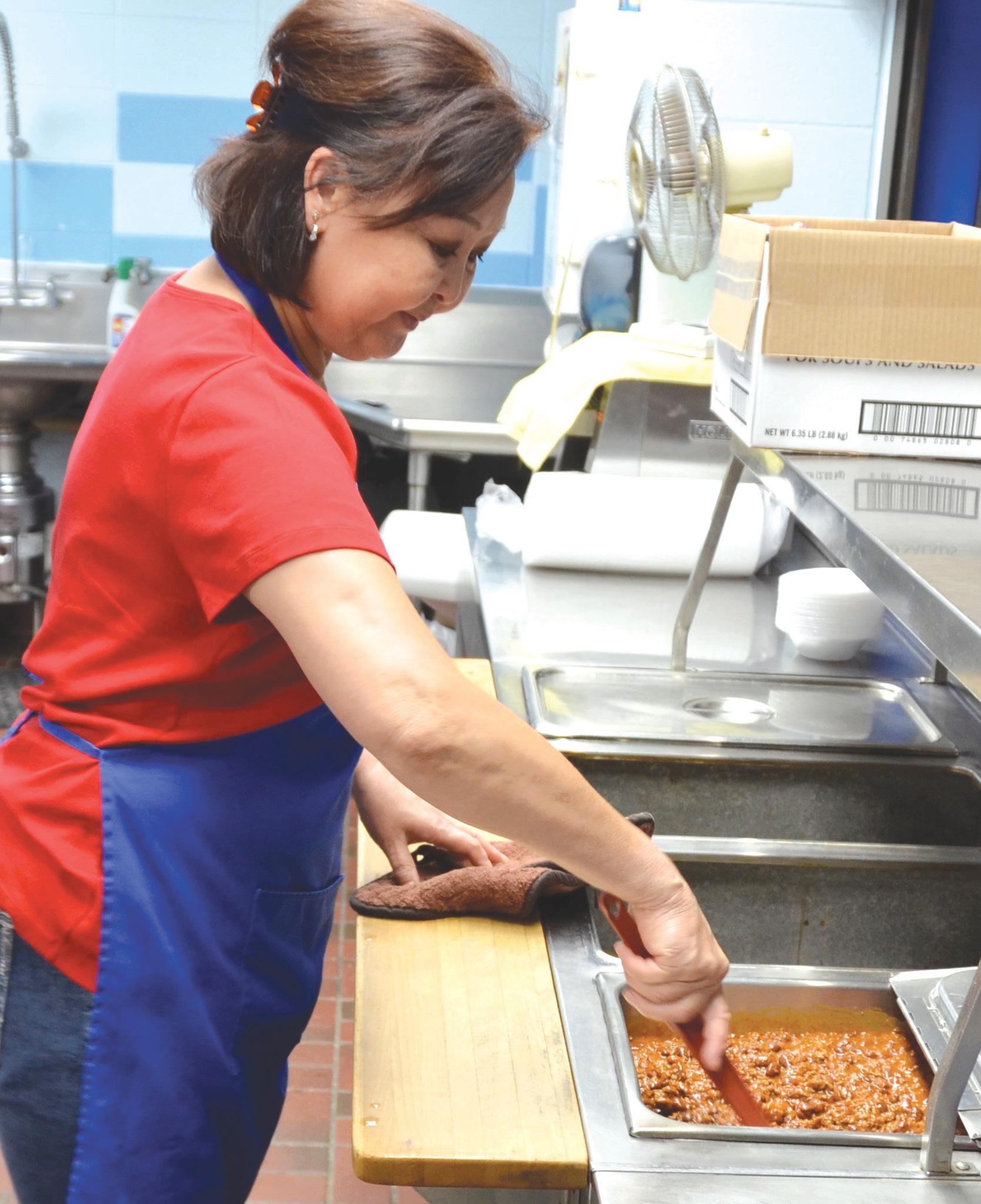
“Most of the beef we use is cut into stew meat, bulk burger or hamburger patties because of the number of kids we serve and the need to stretch our budget as far as we can,” Cindy said. “But occasionally, we’ll have the butcher cut some roasts so we can serve sandwiches. Last year at our Christmas program, we served prime rib. That was really special! And every spring, the student council has a barbecue where we serve steaks. I can’t imagine having to buy enough steaks to feed 160 kids!”
Area ranchers generously donate a cow or steer per year to the program.
“We are amazed over and over at the generosity of our community,” said Heidi Todd, coordinator of the Beef to School program. “To date, over 16 ranches have donated to the program, many of them committing to doing it yearly. We also have very generous businesses willing to make financial donations that we couldn’t do without.”
The Crazy Peak Cattlewomen procure all the donations, make arrangements with the ranchers, schedule slaughter dates and cutting instructions, and even deliver the packaged beef to the school.
“It works well because it’s important to all of us that it’s successful,” Heidi said. She also gives credit to local meat processor Pioneer Meats and owner Brian Engle for their help. “Brian goes above and beyond to help us in the processing. The school pays for the processing, but he offers them a discount to help make it even more affordable. The students really do benefit from everyone’s efforts.”
For high school sophomore Colter Rein, it’s a guarantee that he will be eating good beef. In addition to being on the receiving end of the donations, Colter is on the giving end. He and his family are among the many ranchers that donate beef to the school.
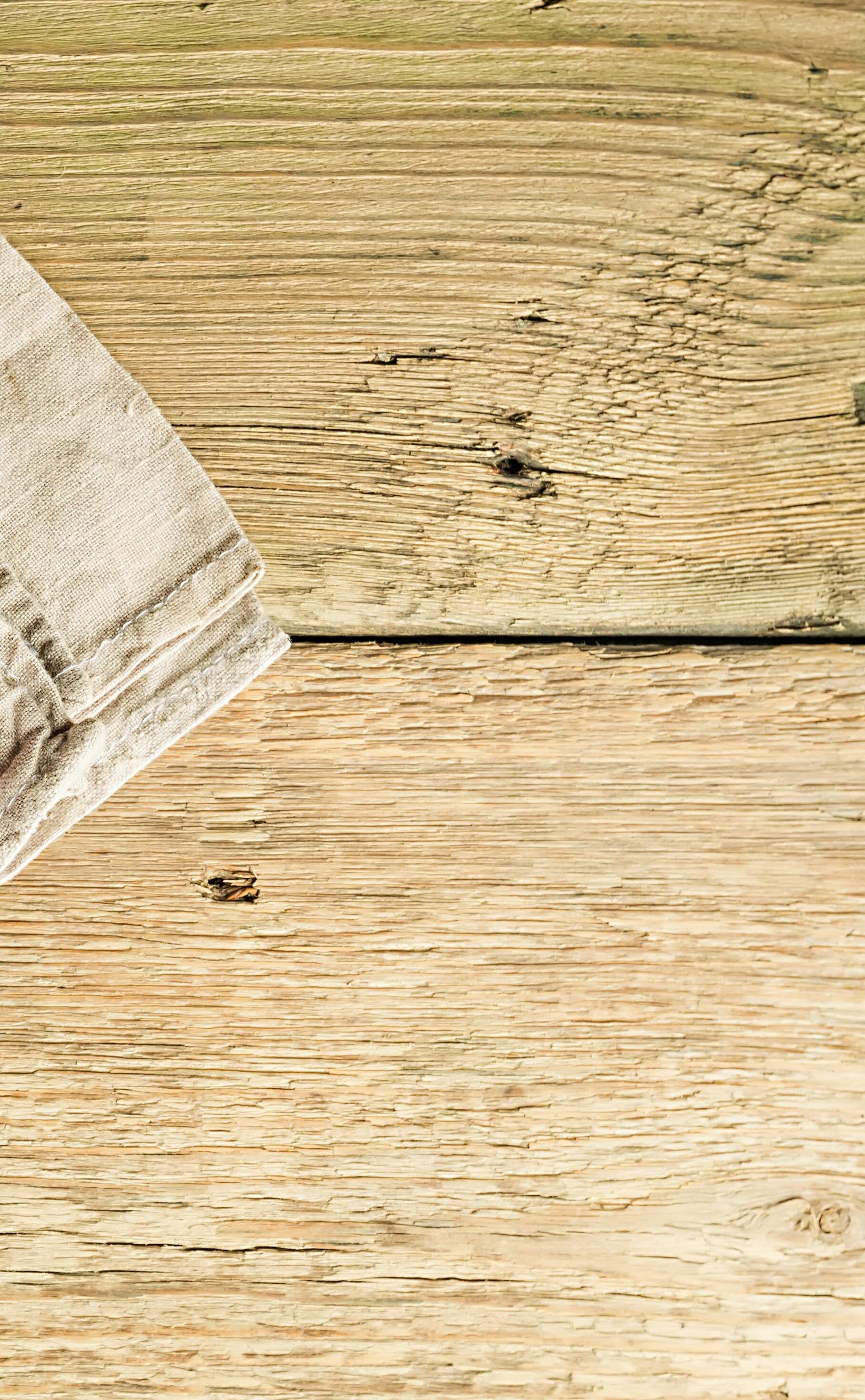
“I think it’s pretty cool that we’re able to have local beef,” he said. “And I’m proud that a steer I raised last year was one of the donated ones.” Colter is quick to explain that he sold his steer to his grandparents, who in turn donated it.
— CINDY BAINTER
His friends echo his sentiments as they all enjoyed a hot bowl of chili with cinnamon rolls on a recent school day.

“
Last year alone, we received 3,500 pounds of beef for our menus. We’ve broadened what we do with our beef and almost tripled our fruit and vegetable budget because of what we save by not having to buy beef.
BEEF’S ON THE MENU AT SGHS
FALL 2019 // 13
“By far my favorite meal was the prime rib dinner,” Colter continued, referring to the Christmas dinner two years ago. “That was really cool. But I’ll also eat a burger any day!”
High school Principal Eric Gustafson said it’s a great program, and the local ranch kids whose families donate beef should be proud.

“We know where our beef is coming from because of the generosity of our local ranch families.” he said. “That can’t be said of most schools. It’s a tremendous program. I feel it’s important for our kids to know that this beef was born, raised and finished right here in Sweet Grass County.”

In addition to the school lunch program, each spring the Cattlewomen take part in a program for fourth-graders that allows the students to learn about bratwursts and create their own brat recipes. Pioneer Meats steps in and assists in the program by turning the recipes into actual brats and awarding the best flavors. The day ends with a tour of the processing plant and a tutorial of the procedure in which meat is processed.
One of the greatest challenges for farmers and ranchers today is educating consumers about the source of their food. The agricultural industry is taking great efforts in a number of ways, both nationally and locally, to inform families about the processing of their food while eliminating misinformation about this important part of agriculture.

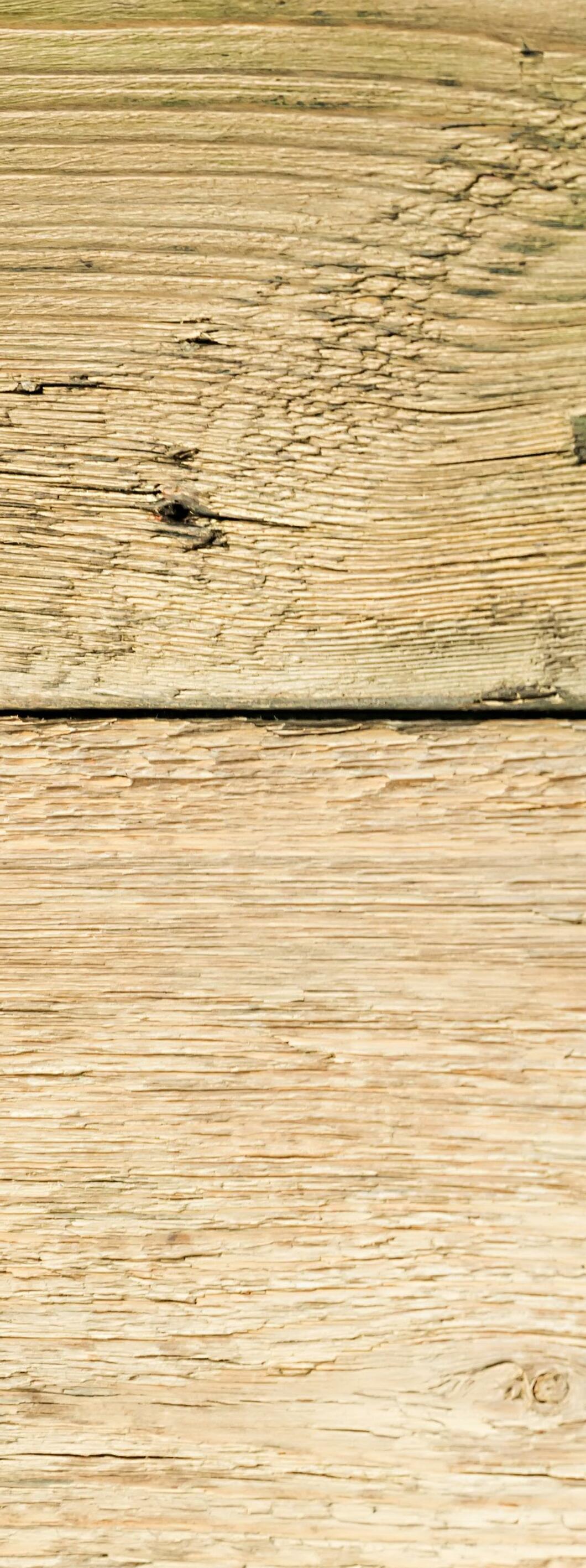
The Crazy Peak Cattlewomen are instrumental in helping Sweet Grass County students ensure that they know and appreciate where their food is coming from and what it takes to get it from the pasture to the plate.

“We know where our beef is coming from because of the generosity of our local ranch families.”
— PRINCIPAL ERIC GUSTAFSON
STUDENTS AT SGHS ENJOY AN EXTENDED MENU THANKS TO LOCAL RANCHERS’ AND BUSINESSES’ DONATIONS
BRIAN ENGLE OF PIONEER MEATS HELPS MAKE THE PROGRAM POSSIBLE
OUTSIDE SIGN AT SGHS PROUDLYPROCLAIMS LOCAL BEEF BEING SERVED 14 // www.raisedinthewest.com
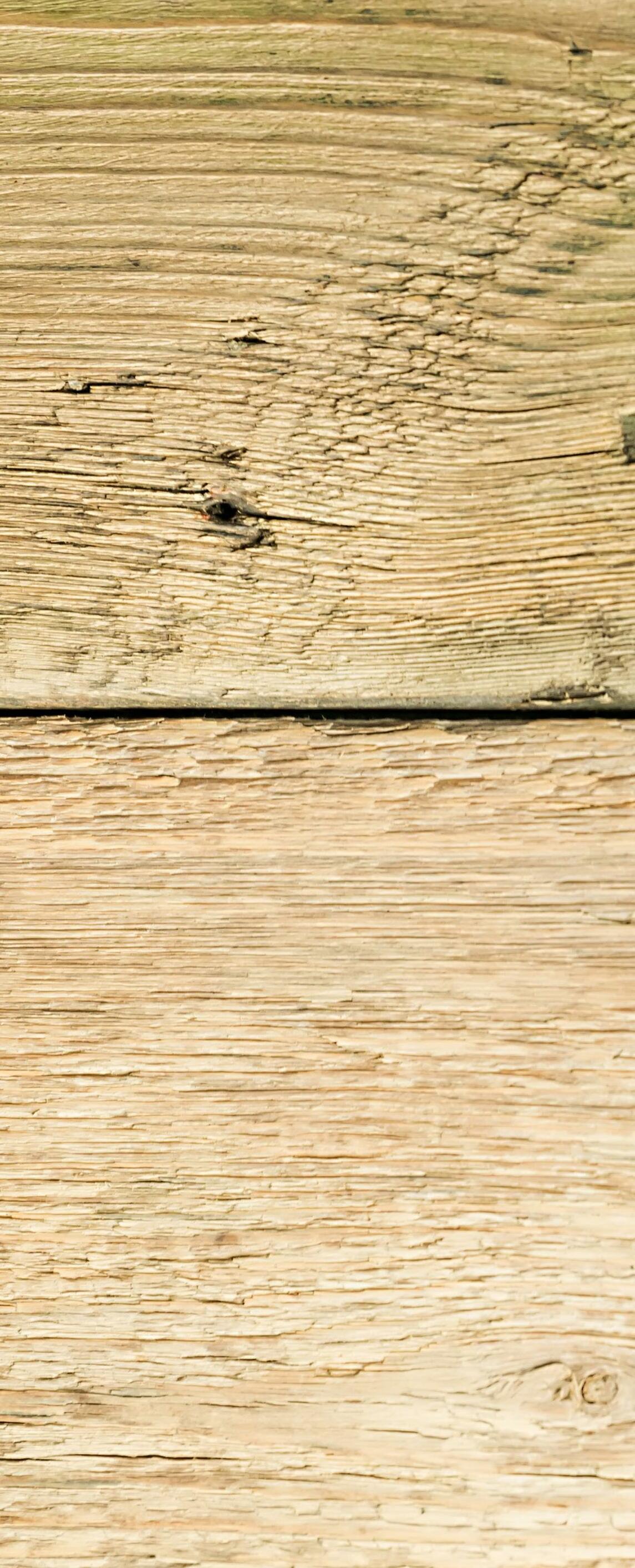






Continental Branch 32 Central Ave N | Harlowton, MT 406.632.4373 Main Office & Big Timber Branch 130 McLeod St | Big Timber, MT 406.932.5311 www.ctznsbank.com Bank Locally. • Engle Ranch • Keith Engle • Yellowstone Boys and Girls Ranch • Laubach Red Angus • Pitchfork Ranch • Kim Colvin • Kinsey Ranch • Sargent Ranch • Cayuse Livestock • D&A Ranch • Rein Anchor Ranch • Pioneer Meats • Community Thrift Shoppe • Blake Ranch • Suzanne Wilson/Tom Knolls • Michael Lehman • John & Janna Lockie • Johnston Livestock • Mark Norem • C W Bar • Cosgriff Cattle • Arlian Ranch • Brett and Julie Todd THESE RANCHES & BUSINESSES PAVED THE WAY FOR THE PROGRAM’S SUCCESS: BEEF SCHOOL ★★★★ TO ★★★★ FALL 2019 // 15
Jean’s Cuisines
NEW TO RAISED IN THE WEST, JEAN PETERSEN CONTRIBUTES HER FAVORITE RECIPES FROM HER COOKBOOK AND HER KITCHEN


PLEASANTLY PERFECT
ELK CHILI PEACH COBBLER
❖ 1 tablespoon olive oil
❖ 2 pounds ground elk
❖ 1 large onion, diced
❖ 2 celery stalks, diced
❖ 2 teaspoons cayenne pepper
❖ 1 tablespoon ground cumin

❖ 1 tablespoon chili powder
❖ 1 can (15.5 oz.) red kidney beans, rinsed and drained
❖ 1 can (15.5 oz.) chili beans
❖ 1 can (15.5 oz.) red beans, rinsed and drained
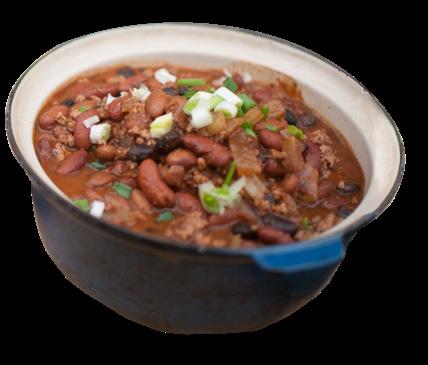
❖ 1 can (28 oz.) whole tomatoes with juice, crushed by hand
❖ 1 small jar (about 8 oz) of your favorite salsa
❖ ¼ to ½ cup grape jelly
❖ 3 to 5 cups water (or whatever consistency chili you want)
❖ Kosher salt and freshly ground black pepper
DIRECTIONS: Heat the oil in a large pot or Dutch oven over medium-high and add elk, onion and celery. Sauté until the meat is brown and the vegetables are soft, about 10 minutes. Add the cayenne, cumin and chili powder and stir for 2 minutes. Add the rest of the ingredients and bring to a boil and immediately turn down to low, partially covered, and simmer for 30-40 minutes. Season with salt and pepper. Serve hot with Gaboo Boo Bread found in the Big Sky Bounty Cookbook, or your favorite cornbread.
NOTES: Serves 8-12
❖ 8-10 fresh peaches or 3 pints, canned peachespeeled, pitted and sliced into wedges

❖ 1/4 cup white sugar
❖ 1/4 cup brown sugar
❖ 1 teaspoon ground cinnamon
❖ 1/2 teaspoon ground nutmeg
❖ 1 ½ teaspoon fresh lemon juice
❖ 2 heaping teaspoons cornstarch
TOPPING MIXTURE:
❖ 5 tablespoons white sugar
❖ 1 tablespoon ground cinnamon
❖ Sprinkle of nutmeg (approximately at 1/8 of a teaspoon)
❖ ¼ cup butter
❖ No Fail Pie Crust found in the Big Sky Bounty Cookbook, or pre-made refrigerator piecrusts.
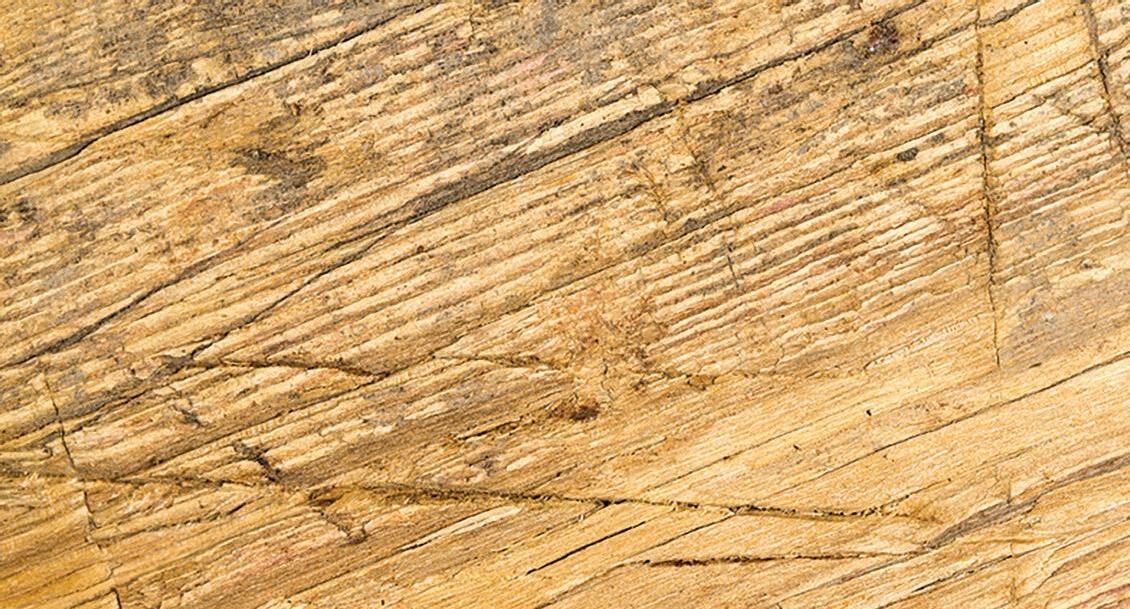
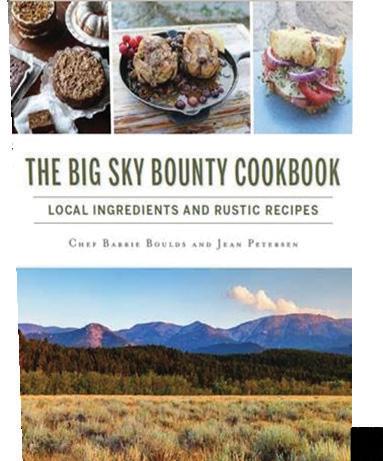
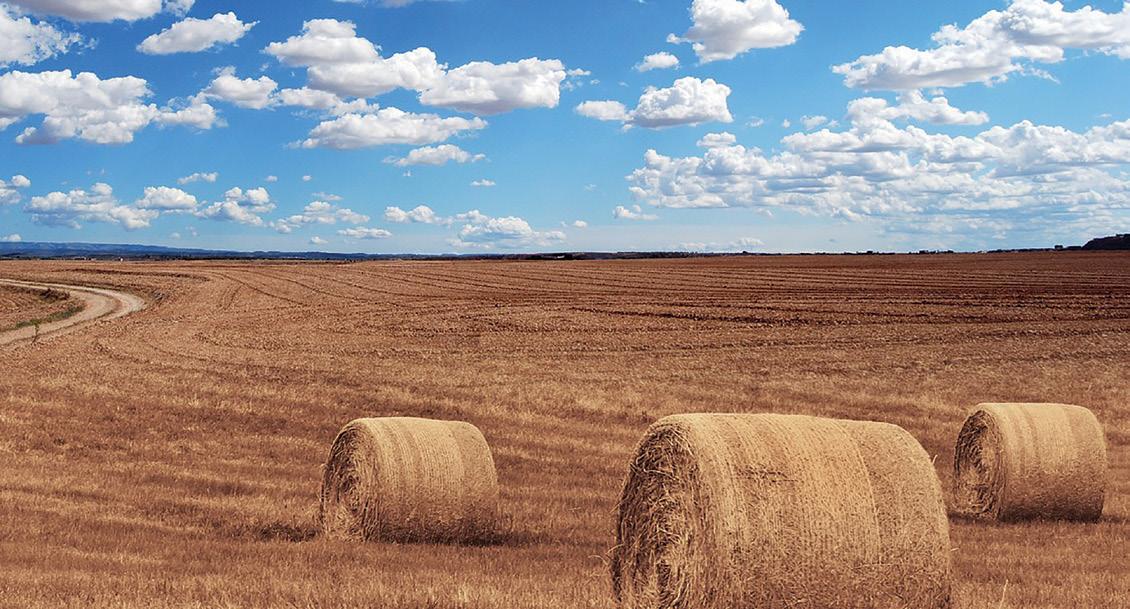

DIRECTIONS: Preheat oven to 400 degrees F. In a large bowl, combine peaches, 1/4 cup white sugar, 1/4 cup brown sugar, 1 teaspoon cinnamon, ½ teaspoon nutmeg, 1 ½ teaspoons lemon juice, and 2 heaping teaspoons of cornstarch. Mix all ingredients together to coat evenly, and pour into a 2-quart baking dish. Bake in preheated oven for 10 minutes. In a separate small bowl, combine 5 tablespoons white sugar, 1 tablespoon ground cinnamon, sprinkle of nutmeg for the topping. Remove peaches from oven, and layer piecrust in a lattice pattern across the top. Sprinkle entire cobbler with the sugar and cinnamon topping mixture. Cut ¼ cup butter into even pieces (about 6) and lay atop the piecrust. Bake until piecrust topping is golden, about 30 minutes. Remove and cool. Serve with homemade vanilla bean ice cream or whipped cream topping.
NOTES: Serves 4-6
*PREPARATION TIP: To easily remove peach skins; In a soup or stock pot add peaches until skins look soften, for approximately 10 minutes, then carefully remove the peaches from the boiling water and place in a pot of ice cold water. Let sit for another 10 minutes and gently wipe the skins way from the peaches. Pits should be easy to remove, and peaches are soft to cut into wedges.
THE
SKY
by Montana Author, Jean Petersen
LET’S EAT WRITTEN BY JEAN PETERSEN
BIG
BOUNTY COOKBOOK
www.jeanpetersen.com New Children’s BOOK RELEASE Alsoavailable... Custom Homes New Construction Cabinets Rustic Furniture 406-425-1245 PETERSENBUILDING.COM
16 // www.raisedinthewest.com
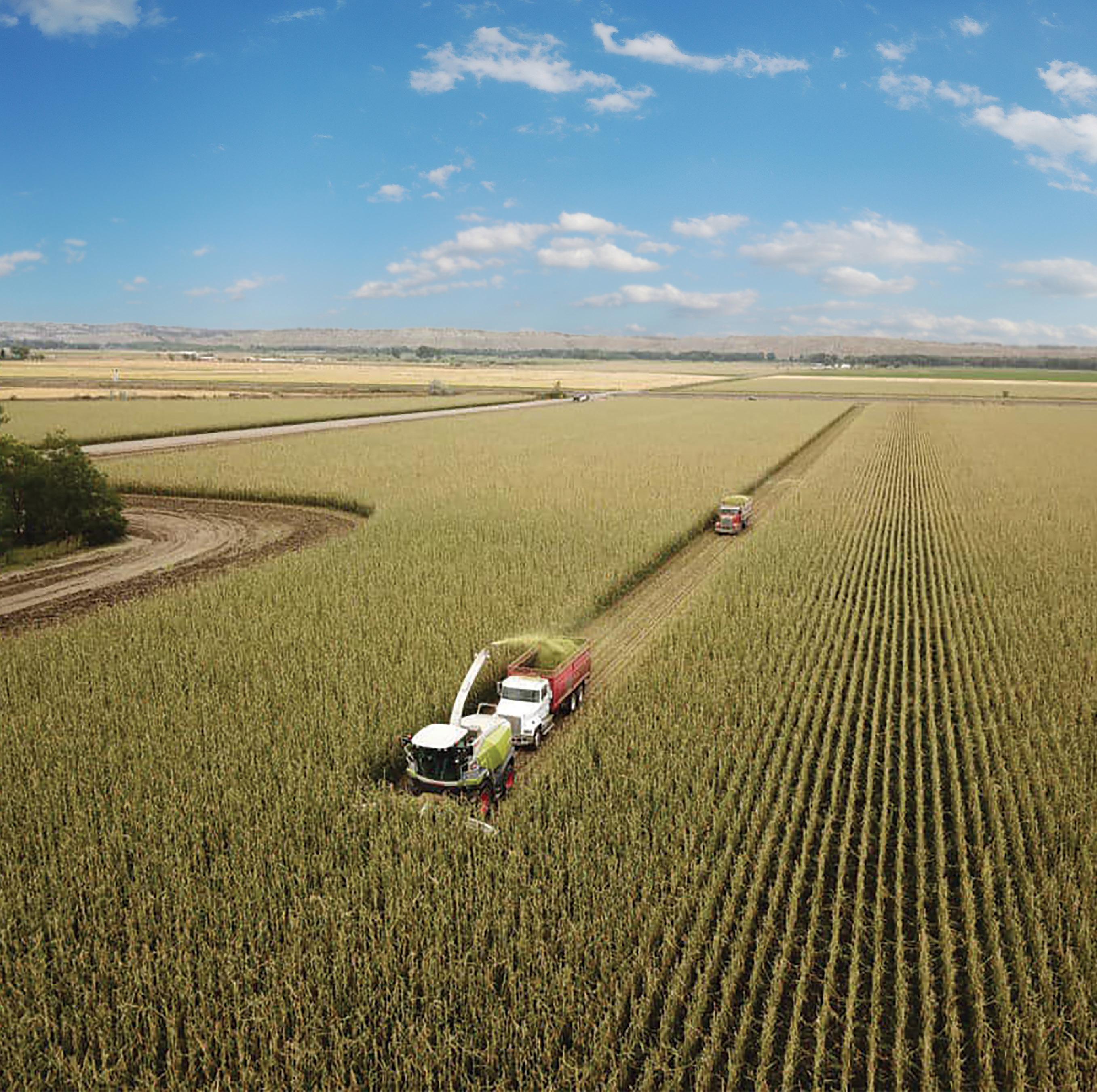



FOR ENERGY AND SAFETY TIPS VISIT YVEC.COM Connected TO MEMBERS... Committed TO COMMUNITY. PROVIDING THE POWER TO MAKE LIFE BETTER!
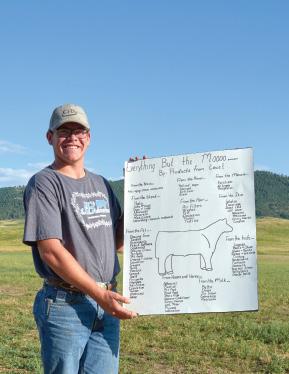
 JAKE BROWN PROUDLY DISPLAYS ONE OF HIS PASSIONS: THE EDUCATING OF CONSUMERS ABOUT AGRICULTURE
JAKE BROWN PROUDLY DISPLAYS ONE OF HIS PASSIONS: THE EDUCATING OF CONSUMERS ABOUT AGRICULTURE
WINIFRED MONTANA WRITTEN BY CYD HOEFLE // PHOTOGRAPHY BY STU HOEFLE RANCHERMontanaA DAY IN THE LIFE OF A YOUNG
18 // www.raisedinthewest.com
It was a typical day for Jake Brown. The sun had barely peeked over the mountain and the temperature was brisk as he stepped outside his home, whistled for his dog and started the ATV. His dog, Duke, bounded toward him and leaped onto the passenger seat just as Jake put the 4-wheeler in gear. His day had started and he had a long to-do list.
The pigs were at the top of it. Jake checked his sows, tossed them feed and headed for the piglets. With a keen eye, he looked over the small passel with satisfaction. Several of them meandered over for a quick scratch behind their ears and a sneak at the bag of treats they knew Jake had in his pocket.
He’s proud of his hogs, which have grown from a couple of sows to seven in just four years. In that short time, with selective breeding, he has earned a reputation as a successful pig farmer and started a business called JB Show Pigs. He farrows in late January and by the end of March he sells as many as 35 pigs to kids in the area for 4-H projects. He feeds out the rest of them to sell as butcher hogs later in the summer. The money is earmarked for a number of things, including helping to pay for his Ford 350 pickup truck and expanding his hog and cow herd.
Jake glanced once more at his prize hogs and headed for the cattle barn. There, he threw several 50-pound sacks of cake in the back of his pickup and departed. A few miles down a county road, he took an abrupt left and started into the Moccasin Mountains to check on the cows, which are on summer range.
He slowly passed by his grandmother’s homestead. She was the first of the Browns to live on the beautiful ranch. Now in her 80’s, she lives just a short distance from the main house and still tries to stay abreast of the ranch’s activities. Decades have passed since she’s lived in the original house, but the stamp of her life is still evident.
Jake continued up the rocky road, carefully maneuvered around boulders jutting out in the road and finally caught his first glimpse of the herd. One of the black angus cows arrived at the pickup before Jake even turned the engine off. He jumped out laughing.
“Hey Trixie!” he said as he scratched the cow across her back. She nuzzled him, moved in for more scratches and accepted the cake from Jake’s outstretched hand.
Trixie is playful. She’s gentle as a kitten and seems to enjoy Jake’s attention as much as he enjoys giving it. But time was slipping away, and he needed to move on. He looked over the cows, checked the water and headed back down the mountain, but not before he gazed over the landscape with deep appreciation.
“Just look at this country,” he said. “Isn’t it beautiful? In every direction! I’d like to build a cabin up here someday just to have a place to get away.”
Back at the house, he checked to see what the plan was for the afternoon. His dad and brotherin-law had been harvesting all morning. He hoped his dad would let him take a shift on the coveted John Deere 9650 combine. Jake loves to drive it, but so does his dad. He was fairly certain he’d end up baling.
The Browns started harvesting their grain as soon as the haying was done and hope to finish the 950 acres of winter wheat in the next couple days. The hail storms that have recently been peppering the area have made them anxious to get their grain in the bins. In addition, Jake will soon be spending days away from the ranch. School starts in less than a week and football practice has already begun.
Jake has a knack for seeing a need and filling it. He’s adept at a multitude of skills. He’s a good mechanic, an efficient plumber

“I just love it, I don’t have bad days living here and doing what I do.”
— JAKE BROWN
JAKE BROWN, WITH HIS PARENTS, SHELLY AND PAT BROWN, SISTER, KYMBERLY CRAIG AND NIECE, PEYTON CRAIG.
FALL 2019 // 19
and carpenter, and he’s great with livestock. As a third-generation rancher, the lifestyle is in his blood and he can’t see himself doing anything else.
“I just love it.” he said. “I don’t have bad days living here and doing what I do.” Content to work on the ranch, he laughingly said that his worst day is when it’s raining too hard to go outside.
The Brown ranch is remote, nestled in the foothills of the North Moccasin Mountain Range, 30 miles north of Lewistown and 30 miles east of Winifred. Cell phone service is sporadic at best, and to reach the family by landline, they would have to be in the house. Most of the day they are not.
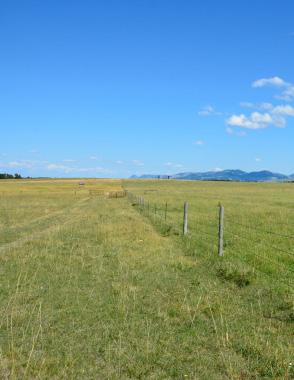
Jake lives on the ranch with his parents, Pat and Shelly Brown, and his sister and brother-in-law, Kymberly and Colbee Craig. The help of each family member is essential for the ranch to sustain itself. There’s always something that needs to be done and Jake’s proven himself to be a good hand. But there are a few things that can’t be ignored, the first being his education.
He’s a junior at Winifred High School. Living 30 miles from school makes a day away from the ranch a long one. Jake plays two positions on the Roy/Winifred six-man football team. On practice days he leaves the ranch at 7 a.m. and returns more than 12 hours later. But he’s as committed to football as he is to the ranch. It’s not only important to the team, it’s important to the community.
“Jake played last year against Absarokee, healing from a broken tooth,” Jake’s mom, Shelly, said. “He broke his front tooth the day before. I knew he was hurting out there, and I know he has a very high pain threshold, but it was hard to watch.”
“We won, too, didn’t we, Mom?” Jake said with a laugh.
When Jake talks about his parents, he immediately gives credit where he thinks it’s due. “My parents have been the biggest influence in my life,” he said. “They have taught me life lessons through ranching.”
It’s hard to believe this capable 6-foot-1 young man is only 16. Mature beyond his years, Jake learned to drive years before he was legal. Like most ranch kids, driving lessons came early, and he was driving machinery before he was old enough to get his driver’s license.
“Jake is very good at every job we give him,” Shelly said. “But he is very good with the cows and is exceptional help at calving time. He has a passion for baby animals of all kinds, from the baby pigs to the baby calves.”

His parents and sister, Kym, agree there isn’t much he wouldn’t try. “Just give him some time,” Kym said. “He’s a thinker. He always figures things out.”
Kym and Colbee, who met while attending Northwest College in Powell, Wyoming, married after graduation and settled in Powell for two years before deciding to return to the ranch in January. It’s been a good move for them and their infant daughter, Peyton.
“We love being back with my family,” Kym said. “This is where we want to raise our daughter, close to her grandparents and Jake. He is such a good uncle. He’s definitely grown up since I’ve been gone.”
There’s not much down time on the Brown ranch. In January, the cows and heifers start calving and continue for several months. After the calving and farrowing, there’s branding and seeding. The

“Jake is very good at every job we give him, but he is very good with the cows and is exceptional help at calving time. He has a passion for baby animals of all kinds, from the baby pigs to the baby calves.”
— SHELLY BROWN
JAKE, OWNER OF JB SHOWPIGS, FEEDING HIS PRIZE HOGS
TRIXIE, JAKE’S FAVORITE COW, ENJOYS THE ATTENTION
20 // www.raisedinthewest.com
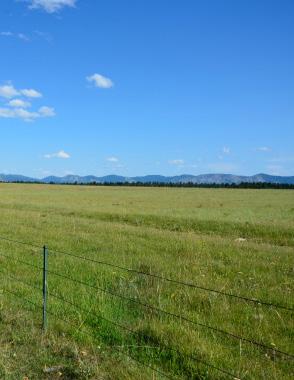

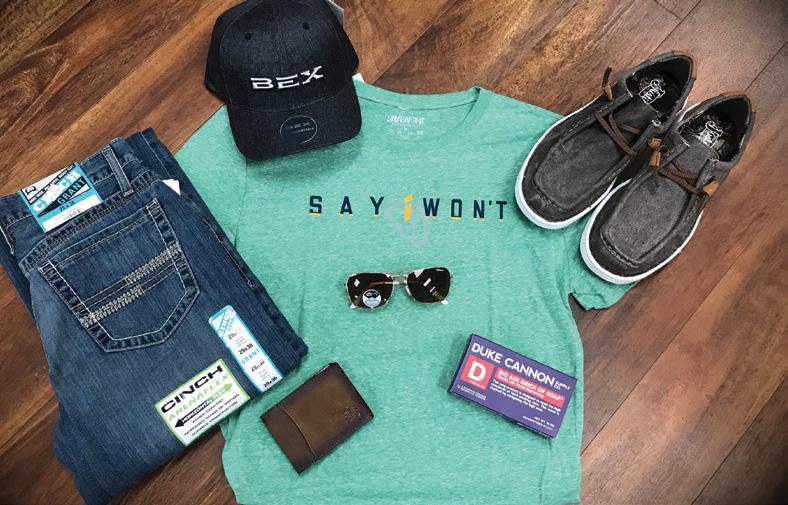

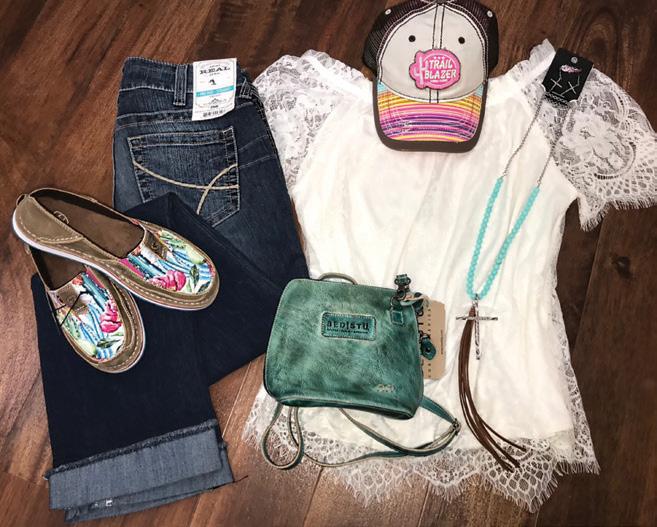

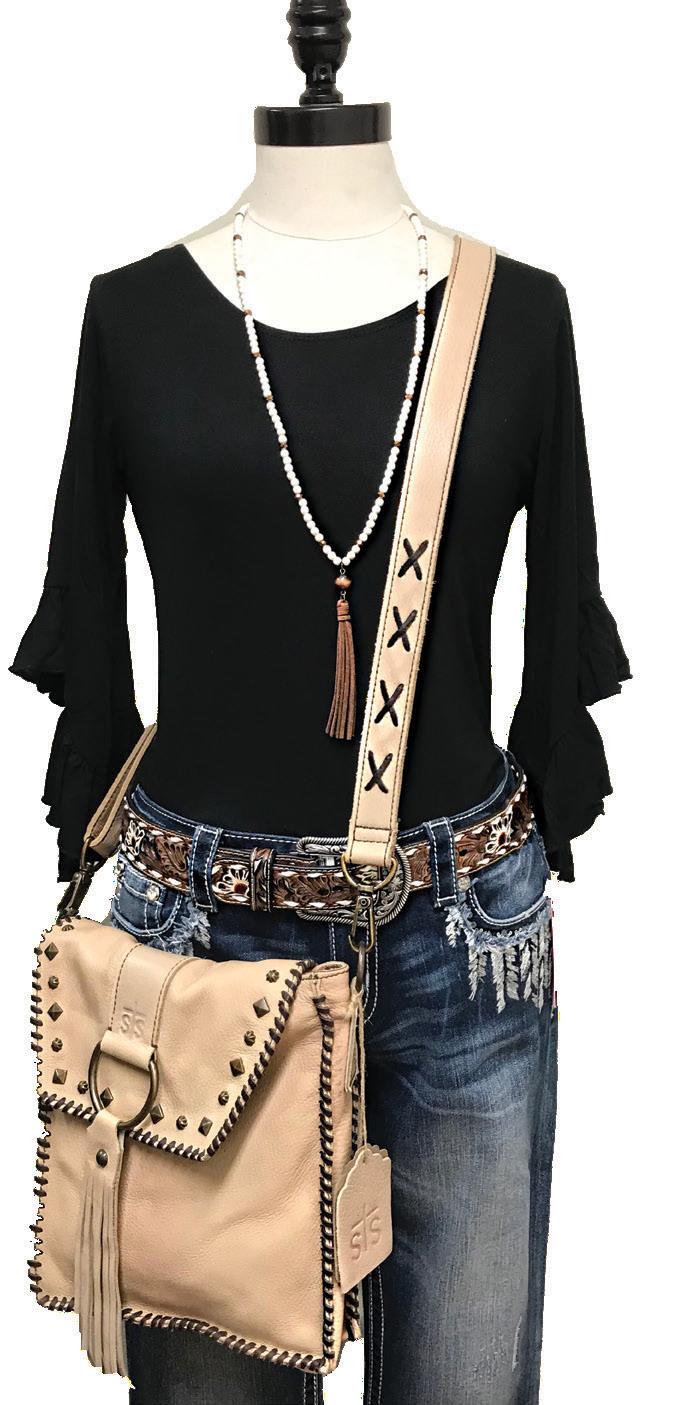

So much more than a ★★★★★★★★★★★★★★★★★★★★★★★★★★★★★★★★★★★★★★★★★★★★★★★★★★★★★ ★★★★★★★★★★★★★★★★★★★★★★★★★★★★★ LAUREL FARM STORE 800 E Main St | 406-628-6314 BRIDGER FARM & C STORE 209 N Main St | 406-662-3623 HARDIN FARM STORE 225 Railroad St | 406-665-1103 FALL 2019 // 21
Browns plant over 1,500 acres of winter and spring wheat every year.
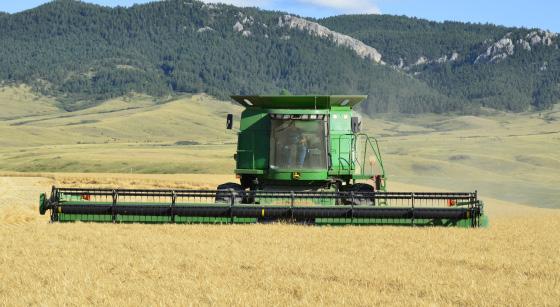
They also move 400 cow-calf pairs to summer grazing scattered over a 20-mile radius in a checkerboard arrangement of pastures. Bulls are turned out and gathered up. Haying is finished just in time to start harvesting. In between, water wells are monitored, fences mended and equipment maintained.
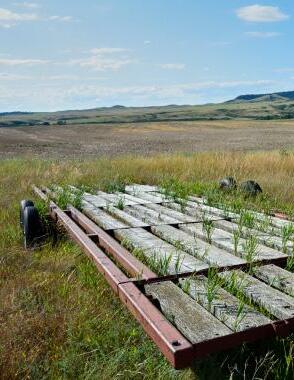
However, it isn’t all work and no play. Hunting season plays a major role in the recreation of the family. The ranch is the perfect habitat for a plethora of wildlife, including elk, deer, a variety of upland birds and even mountain lions. Jake scored his first elk at age 12 on land owned by his family. You can hear the pride in his voice as he tells about hunting mountain lions; getting up with his father at 3 a.m., bundling up against the sub-zero temperature and tracking through heavy snow all before heading off to school.
Winters are long and harsh at the Brown ranch. Snow falls so heavily in February that Jake misses most of the month of school.
“Oh I don’t mind missing a few days,” he said with a grin. “The teachers know I’m working. So that helps.”
And of course there’s football. The Browns are avid fans and huge supporters. They follow the Roy/Winifred Outlaws to all of their games, cheering on Jake and his teammates.
“We do keep busy!” Shelly said. “Like all ranches, there’s always something to do. Pat and I feel truly fortunate to have both our kids here with us and to be on the ranch that has been in the family for so long.”
“We hate to see Jake leave” she added, anticipating his graduation from high school in two years, “but we’ve encouraged both of our kids to get out and see the world. Get an education and then if you want to come home, then that’s great.”
Jake’s still thinking about where he will go and what he will study. He’s smart, articulate and a self-starter. At an event in Lewistown in June, he took it upon himself to draw up a poster that demonstrated how many by-products are produced from a beef carcass. Posted on Raised in the West Magazine’s Facebook page, it was shared over 275 times. Asked what inspired him to do that, he answered, “I just thought it might help.”
As ranchers persevere and strive to pass down their places to the next generation, it seems safe to say the Brown ranch will be in good hands.
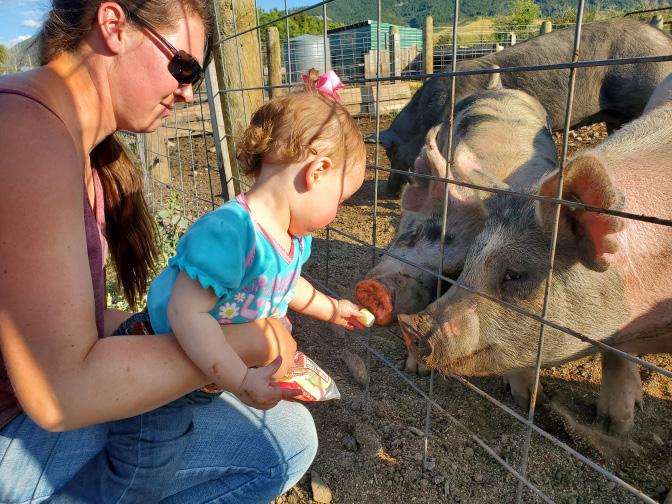 HARVEST TIME ON THE BROWN RANCH
BABY PEYTON, THE 4TH GENERATION OF BROWNS, LOVES THE HOGS AS MUCH AS UNCLE JAKE.
HARVEST TIME ON THE BROWN RANCH
BABY PEYTON, THE 4TH GENERATION OF BROWNS, LOVES THE HOGS AS MUCH AS UNCLE JAKE.
22 // www.raisedinthewest.com
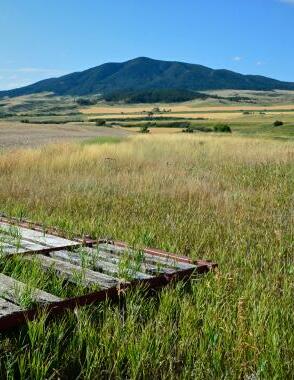
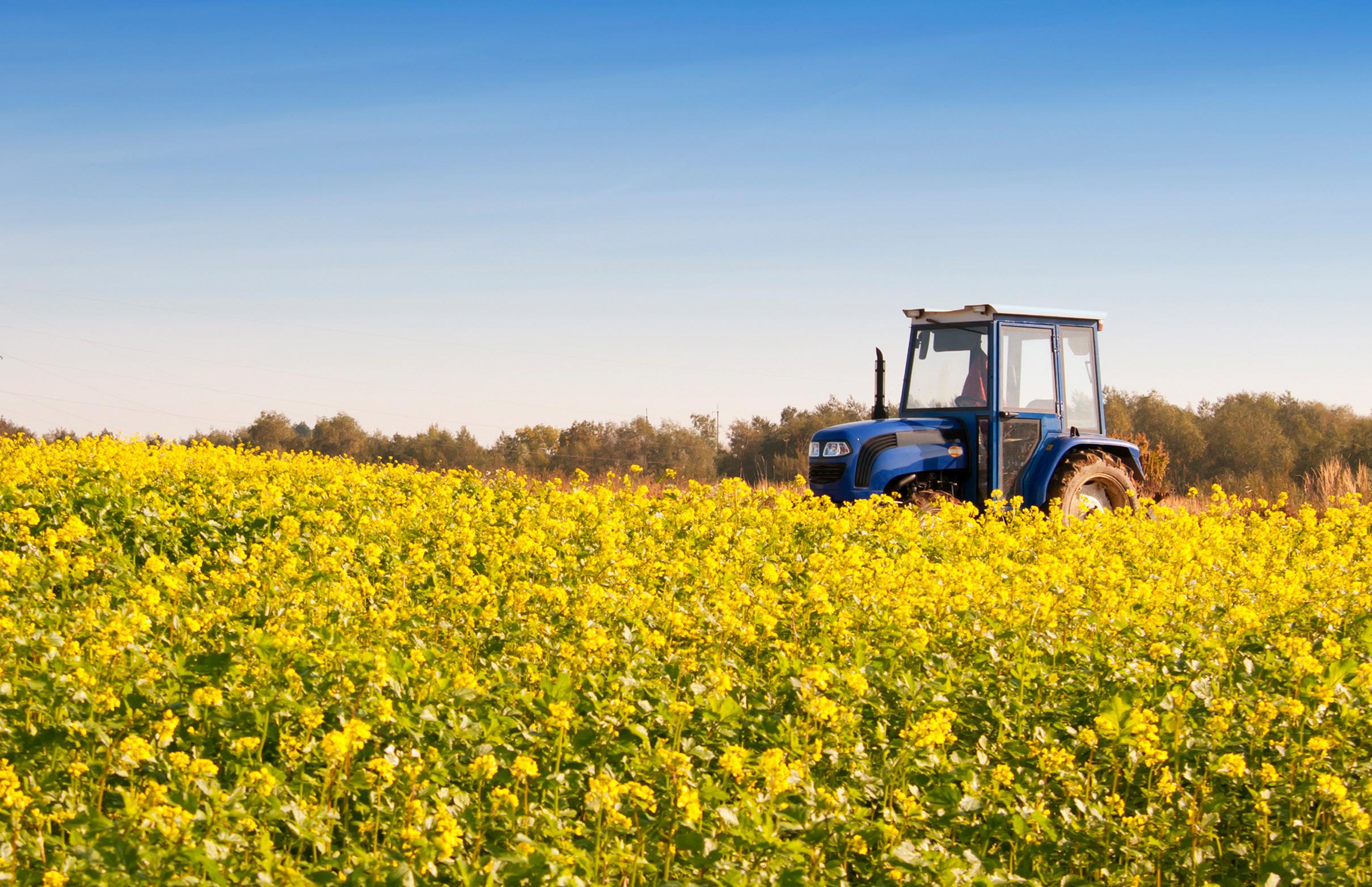
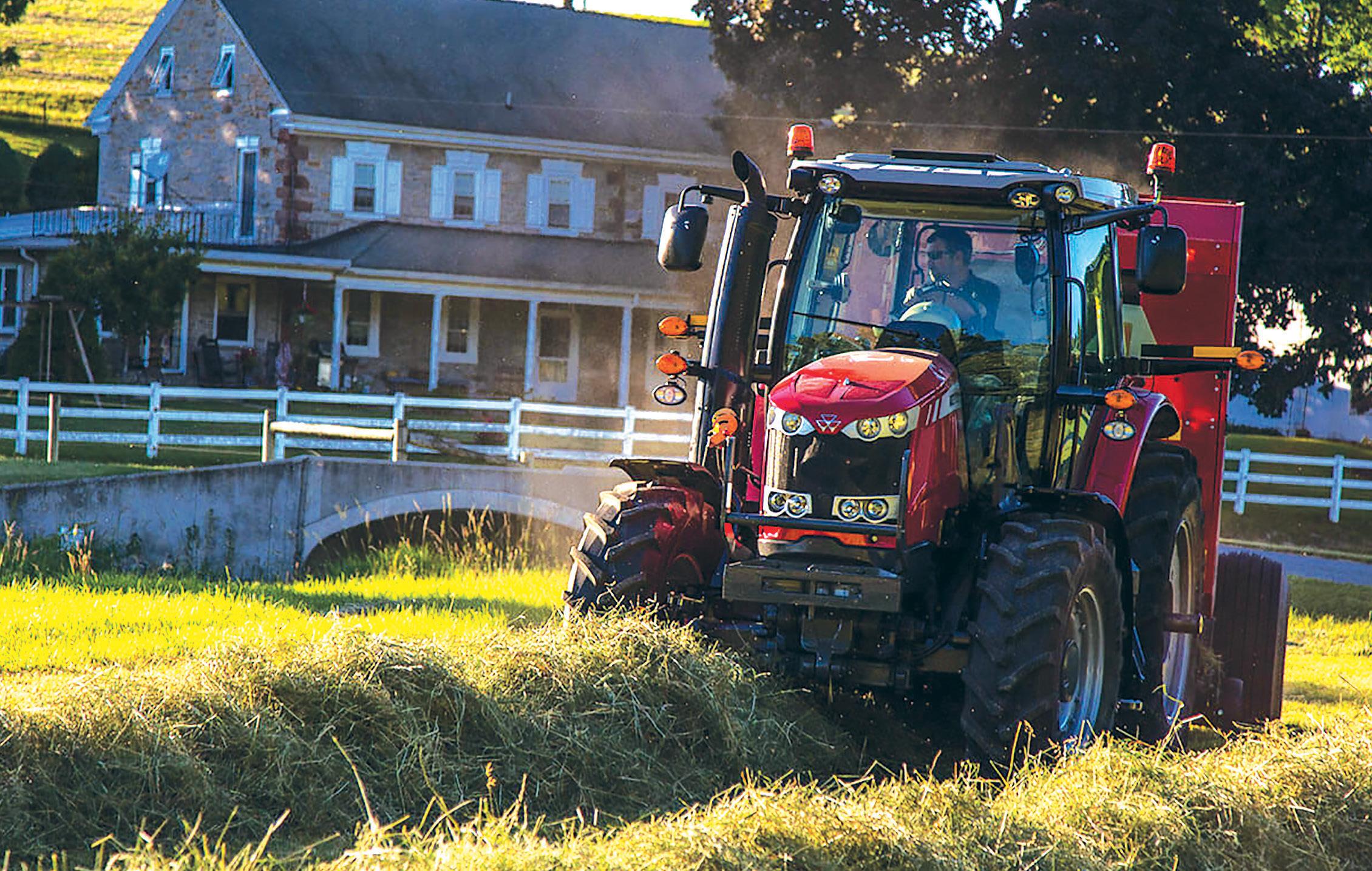
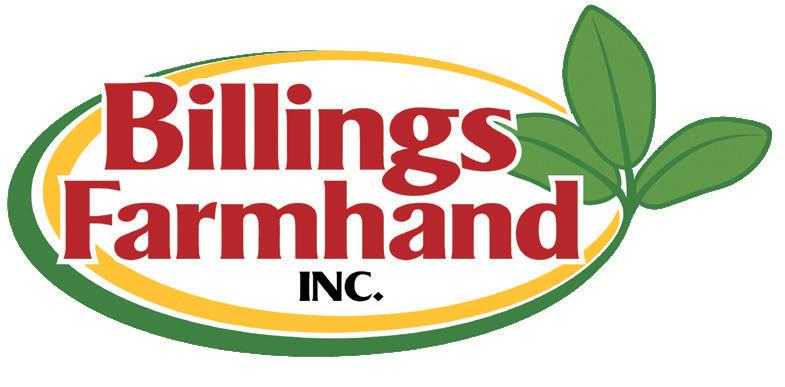

WE WORK WHERE YOU WORK VISIT US FOR ALL OF THE PARTS YOU NEED TO GET THE JOB DONE! NATIONALLY KNOWN. LOCALLY OWNED. MONTANA LOCATIONS BILLINGS* ANACONDA BAKER BELGRADE BIG SANDY BOZEMAN BROWNING BUTTE CHESTER CHINOOK CHATEAU COLUMBUS CONRAD CULBERTSON CUT BANK DEER LODGE DILLON FORSYTH GLENDIVE GREAT FALLS HARLOWTON HAVRE HELENA LAUREL LEWISTOWN LIVINGSTON MILES CITY STANFORD RED LODGE SCOBEY SHELBY SHERIDAN SIDNEY TOWNSEND WHITEHALL WOLF POINT BUFFALO CODY DUBOIS GILLETTE GREYBULL POWELL RIVERTON SHERIDAN SUNDANCE WORLAND WRIGHT *Company owned WYOMING LOCATIONS Billings Raised in the West Magazine Ad.indd 1 4/24/19 4:40 PM 815 Mullowney Lane Billings MT 59101 406-259-4223 www.billingsfarmhand.com The last tractor you’ll ever need. FALL 2019 // 23
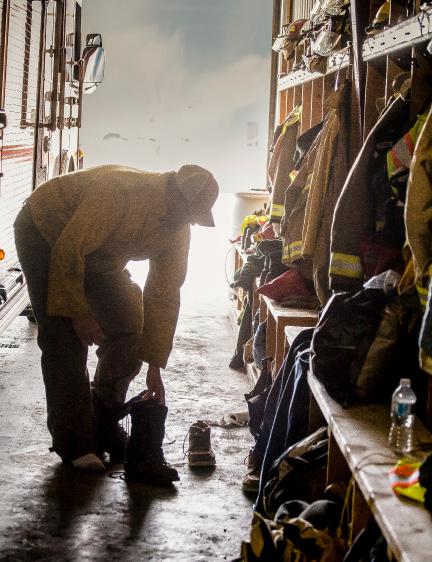
 BY JEAN PETERSEN
BY KAYLA SARGENT
ASSISTANT
BY JEAN PETERSEN
BY KAYLA SARGENT
ASSISTANT
BIG TIMBER MONTANA WRITTEN
// PHOTOGRAPHY
VOLUNTEERS OF THE BIG TIMBER FIRE DEPARTMENT GO ABOVE AND BEYOND THE CALL CALLAnswering the
FIRE CHIEF, KURT LAUBACH PREPARES FOR A CALL 24 // www.raisedinthewest.com
Every second matters. Urgency pressures action and response time is immediate when the pagers release their call. The siren sounds and the Big Timber Volunteer Fire Department is ready to spring into action. Volunteers from every corner of the county will be responding because someone needs help.
Assistant Fire Chief Kurt Laubach knows he can depend on his team. They are dedicated to the job and he knows each of them well.
“We’re here because we want to give back to our community,” he says. “We know our team’s strengths and how to get in, get done and support each other. Most of us are here because fighting fire is something we really enjoy.”
These volunteers are a diverse group of people who are vested in the department as active members. In their ranks are teachers, lawyers, mine workers, ranchers and business owners. When the siren rings, they leave those identities behind and come running.
Because the fire department is allvolunteer, the community businesses understand that employing volunteer firefighters means there is a good chance that at some point, they will be called out during business hours. Many of them offer wage compensation to their employees who are called to fires or other emergencies and many are huge financial contributors to the department.
“It’s widely accepted that when we’re called, we have the option to get to the call and this ensures that we (the fire department) have the coverage where and when we are needed to go,” Kurt said.
That kind of support is one of the reasons that generations of firefighters are from the same families. Karl Conner, who has served the team for 31 years, says, “It’s something I grew up with. My father was a big part of it; that’s how many of us became
involved. Our fathers and grandfathers served, and we want to continue the service and legacy.”
Chase Stevens echoes, “I started because my dad was fire chief. I liked it. I also wanted to do something for the community and be a part of what he was doing.”
With over 175 calls in a year’s time, the department sees plenty of action, but they are also required to take part in monthly training. Many of the volunteers attend various fire schools and other training sessions around the region to learn about new techniques, equipment and emergency responses to bring home and teach to their fellow firefighters.
At the firehouse, they race for their turnout gear, stored neatly in open lockers along the walls of the fire station. They quickly pull on jackets, pants and boots, grab their helmets and race for the assigned truck. Their commitment to each other and the department, and their jovial camaraderie, are deeply rooted, and clearly a huge part of their success.
“We’re here for each other and have a good time doing something we really enjoy,” says Pat Leary, a 29-year active member. “We’re not going to leave anyone standing alone.”
“Everyone knows their niche,” Kurt says. “Depending on the situation, some of our team roles vary in different areas, but we always respond, regardless.”
The department has a reputation for working well with the other emergency departments in Sweet Grass County. Agreements are in place that allow the fire department to work hand in hand with the county emergency response teams, local businesses and industries, such as the Stillwater Mine.

With a service area nearly the size of Delaware, Big Timber’s






“We’re here because we want to give back to our community.”
— ASSISTANT FIRE CHIEF KURT LAUBACH
FALL 2019 // 25
WY
volunteers cover 37 miles of interstate, 70 miles of state highway, hundreds of miles of county road and countless acres of open range and forest, making cooperation imperative. The 40-member firefighter team, along with four junior members, give it their all to serve their community on a regular basis.
They are known for continually giving their neighboring departments and support services the credit and recognition due. But they also take an aggressive stance to quickly deal with fires and emergency situations.
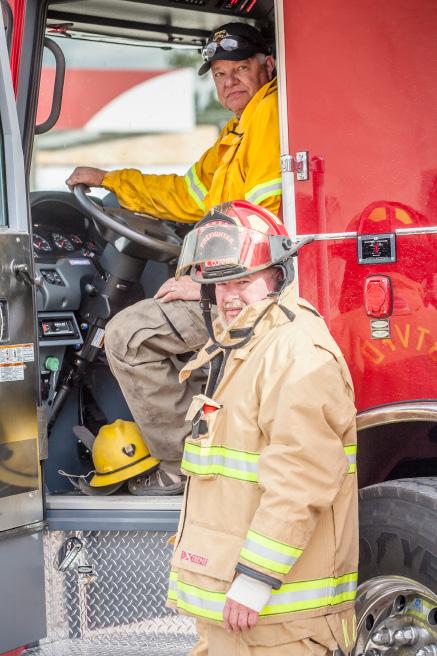

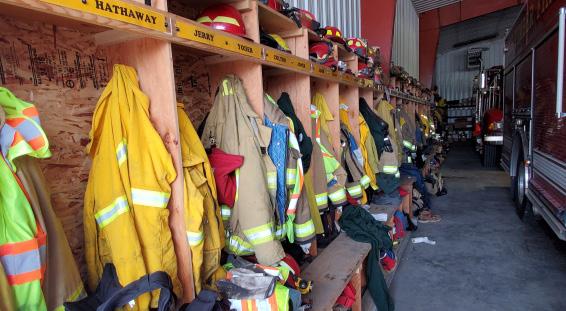
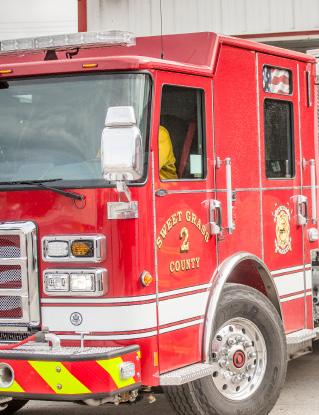
“We like to attack a fire,” Kurt explains. “We take a more offensive strike, when we can, rather than defensive. It also comes down to our lead time. When we get called out, we have the volunteers who can get out to the calls because the community understands the importance of what we’re doing, and we can move quickly.”
This type of positioning has allowed the department to quickly access situations and take action. In addition to answering the call of emergencies, the department is a huge presence in the county of 3,700 people, which swells to over 9,000 during the tourism season. They teach an education program in the school district on fire prevention, sponsor an annual pancake supper and are a huge presence at events such as the local rodeo.
The honest, friendly and contagious feeling of sincere enjoyment of each other and their commitment to the community is evident at the fire station. All of the firefighters convey their his dedication toward a service profession that fills their souls, is shared deeply through generations of families and is something that immediately creates a presence of wanting to be part of what they have and what they do.
“When it comes down to it, fire is really interesting, and who doesn’t want to help someone in a time of need? That’s just what we do,” Pat says.
KARL CONNER AND PAT LEARY HAVE A COMBINED 60 YEARS WITH THE DEPARTMENT.
Heartland Kubota, LLC 2450 Heartland Dr. Sheridan,
82801 307-672-8011
26 // www.raisedinthewest.com
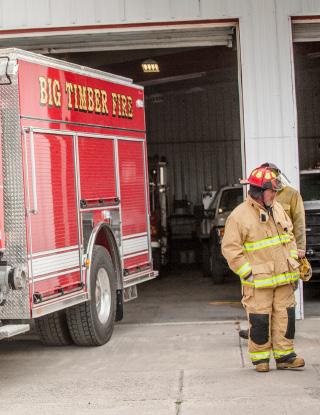
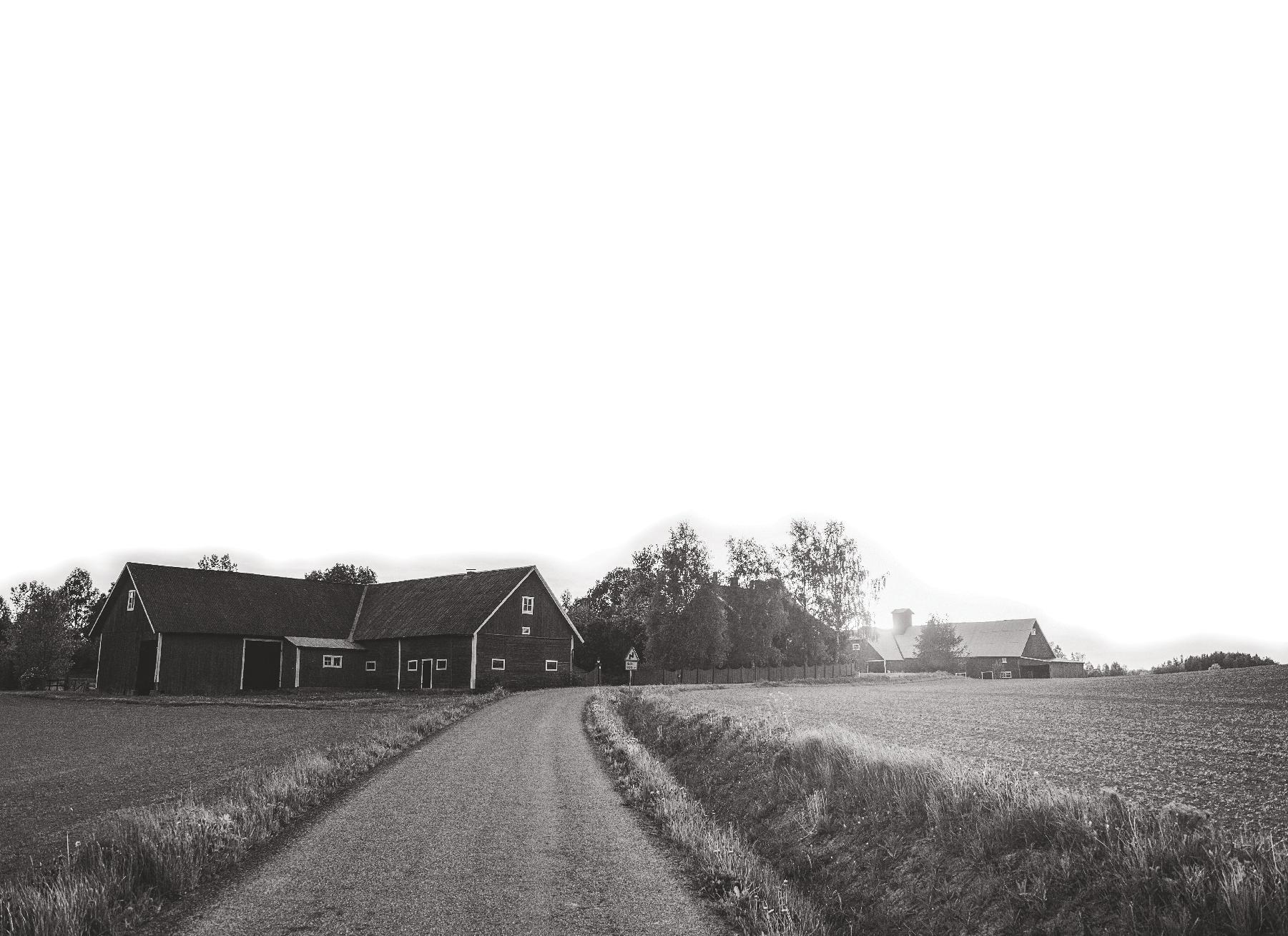
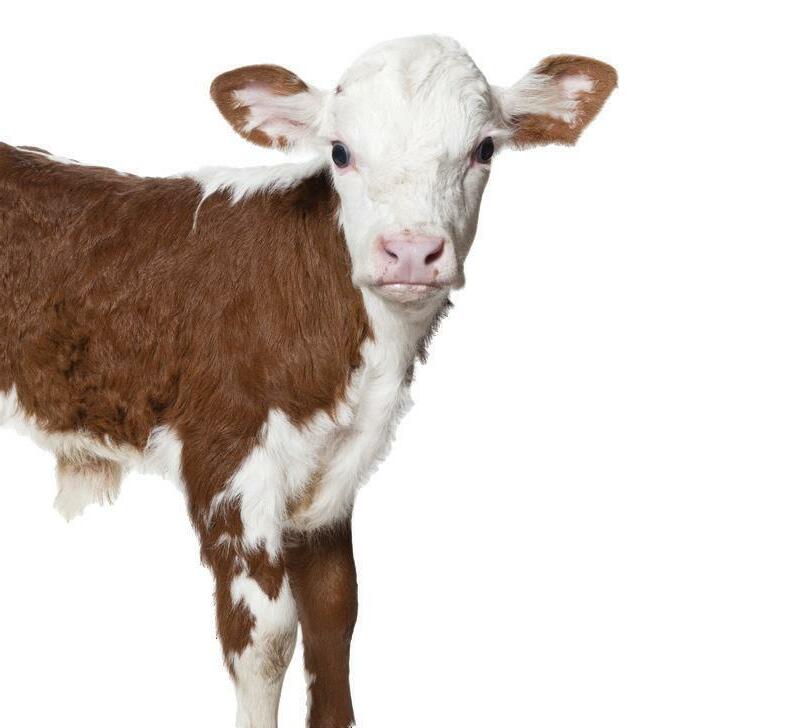
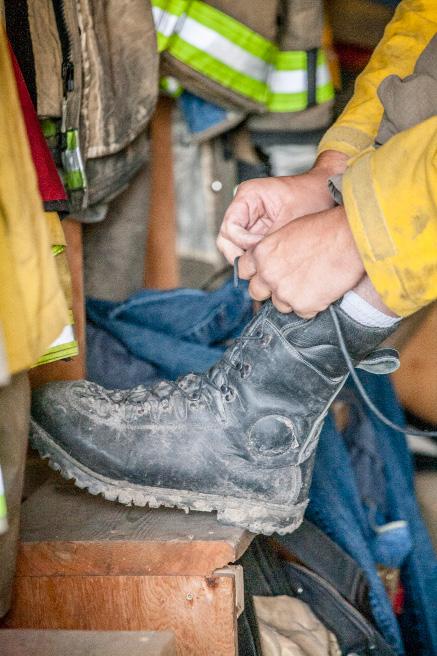
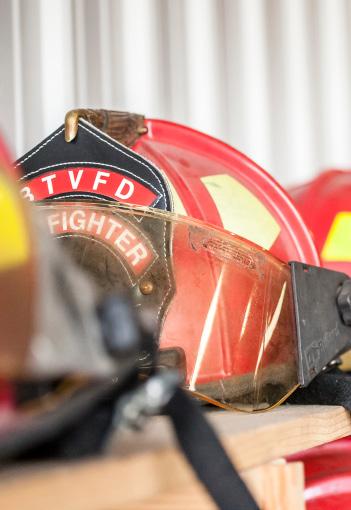
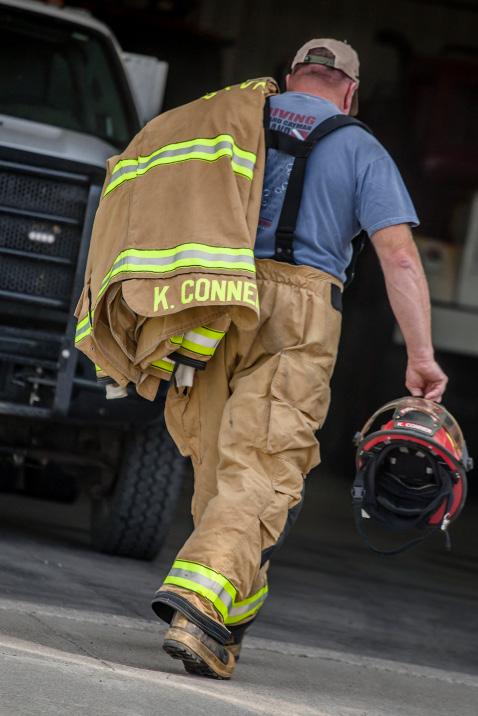



Extended SHOPS • CALVING BARNS • DETACHED GARAGES WiFi Coverage for YourSTAY CONNECTED Monitor your operation 24/7 from anywhere. PROTECT YOUR INVESTMENTS Temperature Controls Smart Locks Update Farm Software Security Cameras Calving Cameras Accessories not provided by Nemont. 800.636.6680 | nemont.com FALL 2019 // 27
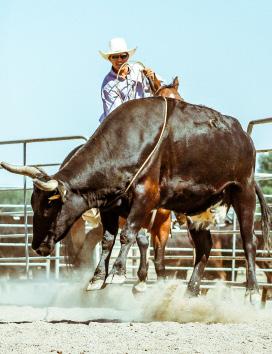 WRITTEN BY CYD HOEFLE //
PHOTOGRAPHY BY MCKENZIE HOLMBERG
RILEY OLSON, IT’S A CATCH!
WRITTEN BY CYD HOEFLE //
PHOTOGRAPHY BY MCKENZIE HOLMBERG
RILEY OLSON, IT’S A CATCH!
PARK CITY MONTANA
28 // www.raisedinthewest.com
Dusty horse trailers pulled by pickup trucks are parked haphazardly around the arena. Cowboys on horseback visit, joke and challenge one another. All wear blue jeans, long-sleeved shirts, scuffed cowboy boots and well-worn straw hats. Families and friends rally close by.
Soon all are called into the area where the official rules will start and a prayer will be said. It is the start of another ranch rodeo, one of dozens scheduled around the region this summer.
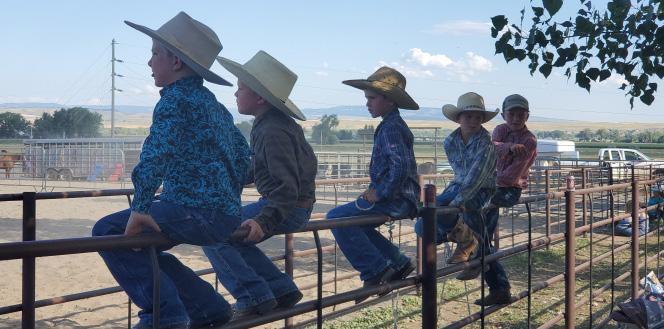
Ranch rodeo is a reminder of the rich history of Western culture, with cowhands racing against the clock and other teams, competing for bragging rights of being the best at what they do. Teams compete in events involving skills they might use on a

typical day on a working cattle ranch. Calves need to be branded, mother cows outwitted, sick ones doctored and always, it seems, there’s a reason for a cow to be loaded up and hauled somewhere.
The events unroll as a team takes to the arena and tries to outsmart not only the other teams, but the critters involved. A mounted team of four rapidly approaches the small herd of steers at the end of the arena. One cowboy moves forward swinging his lariat. The cattle start to break up and he aims for the head of the designated one. His loop glides out from his hand and drops expertly over the horns of the steer. He pulls it tight and dallies around his saddle horn at the same time as he starts to maneuver the steer around for one of his teammates to heel it.
YOUNG COWBOYS WAITING TILL THEIR “BIG ENUF”
FALL 2019 // 29
Another cowboy, already swinging his loop, waits for the perfect moment, aiming accurately as he lets go, successfully catching both heels. The two riders stretch their ropes tight as the two remaining cowboys dismount and race toward the steer, bringing him to his side. They scramble to remove both ropes, throwing their hands in the air as the clock stops. The event is team doctoring, and the object is to catch the steer, lay it on its side — which is when the doctoring would take place if it was being done on a ranch — and get the ropes off as fast as possible. Less than two minutes have passed.
The event rules may differ slightly with each rodeo, but the code of conduct remains the same. Abuse of personal or event animals and unsportsmanlike behavior is prohibited and results in instant disqualification. The cowboys represent not only their ranches, but a way of life that still plays out across the country, where hard-working men and women battle against time and change to maintain the lifestyle of the American cowboy.
The dust has barely settled when the current team of cowboys exits the arena and the next one takes over. The heat of the day beats down on them as each team waits its turn.

Just outside the arena, in welcome shade, family members not competing, wait patiently, talk openly, and laugh loudly as they visit with neighbors and friends. Children, all wearing cowboy hats, swing lariats and chase one another across the green grass of the expansive yard behind them.


Ranch rodeos are becoming more popular each year. They typically attract 10 to 12 teams that enter in all of the events. Cowboys and cowgirls compete in teams of four, each teammate ready to step in if the first member misses a loop or needs help. But it’s more than just events and winnings. It’s part of the social circle that area ranchers and their families look forward to every summer.
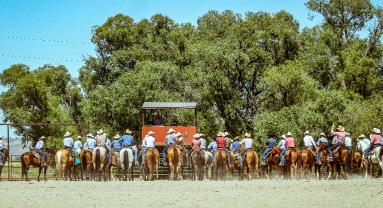

For Kayla Dickenson of Miles City, the mother of five boys, it’s a chance to be with friends she hasn’t seen for a time.
 CONTESTANTS MEETING AT CONNEXION RANCH RODEO
CONTESTANTS MEETING AT CONNEXION RANCH RODEO
CELEBRATING 40+ YEARS OF SERVICE TO BILLINGS CARSTAR.com | 406-259-1856 1342 Main St. Billings, MT CARSTAR Auto Body Specialists • CERTIFIED EXPERT TECHNICIANS • FREE ESTIMATES • 24 HOUR ACCIDENT ASSISTANCE • PREMIER REPAIRS ON ALL MAKES AND MODELS • CLAIMS ASSISTANCE406-328-4344 57 N Woodard Ave Absarokee, MT Open M-F 10am-4pm Weekends & Evenings By Appointment ParadeLightedand Fireworks! SN❅WFLAKE FESTIVAL 2❄19 SN❅WFLAKE FESTIVAL 2❄19 • FRIDAY • DEC. 6th SAVE the DATE
30 // www.raisedinthewest.com




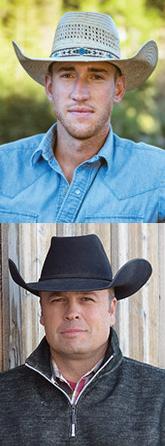
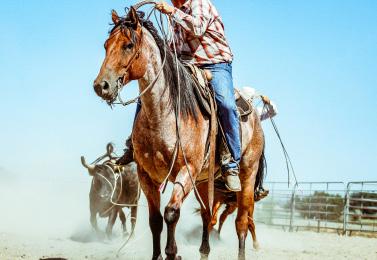

WE BELIEVE IN THE SUCCESS OF THE AMERICAN FARMER AND RANCHER Clark & Associates is a licensed farm and ranch broker in Montana, Wyoming, North Dakota, South Dakota, Nebraska, and Colorado. Specializing in real production properties. Colter DeVries 406-425-1027 colter@clarklandbrokers.com ClarkLandBrokers.comDenver Gilbert 406-697-3961 denver@clarklandbrokers.com WADE KNODEL, PART OF VX CAMP TEAM CHASES AFTER A COW FALL 2019 // 31
“It’s all about camaraderie, community, and catching up,” Kayla says. “It can get lonesome living out on the ranch. Seeing other families is really fun for me.”
Kayla’s husband is part of a team from Miles City. His influence is already sprouting up in their boys, as 11-year-old Luke and 14-year-old Todd compete in as many Youth Ranch Rodeos as possible during the summer. At this rodeo, the adult teams are vying for a chance to win a spot at the NILE Ranch Rodeo Finals in Billings, held in October.
A team from Wyoming, consisting of Andrew and Eric Wasserburger and Lane and Brett Hageman, is already a contender. The Wasserburger brothers ranch at Lusk and the Hageman brothers ranch at Fort Laramie. They have competed together for almost a decade and are the 2018 NILE champions. The team is hoping for a title repeat.
“Raising a family and keeping up with the ranch has kept us from going to as many rodeos as we have in the past,” Andrew said. “But
we always look forward to the ones we attend. We like coming to Billings. We make a few days of it. We bring our families and get together with friends. It’s a good way to spend some time before winter sets in. We’re competitive, all the teams are. The social part is fun, but we want to win. It’s the last rodeo of the year and we’d like to take home some winnings!”

 — KAYLA DICKENSON
— KAYLA DICKENSON
His wife, Anne, is quick to say she enjoys watching her husband and his team compete, but loves the social aspect of the rodeos, too.
“We’re all around the same age,” she said, “and most of us have kids under 5. To get together with neighboring ranches and friends during the summer is fun for the entire family. The NILE is especially enjoyable because our guys are confident. I think it’s the place and timing. It’s exciting to come to Billings. The fall work is done and we’re not as busy at the ranch, so no one is thinking about what has to be done back home.”
The last event at most of the rodeos, and perhaps the favorite of the spectators, is the wild cow milking. It’s a fast-paced, entertaining event and has the entire crowd on edge and cheering
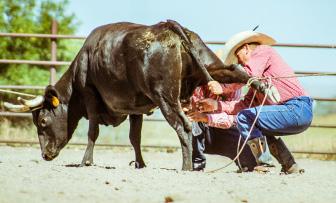
“
It’s all about camaraderie, community, and catching up... Seeing other families is really fun for me.”
9300 South Frontage Rd. 406-294-8473 staleystire.com AG TIRES for Tractors, Trailers, and Equipment! CONTESTANTS WORK MADLY IN THE WILD COW MILKING CONTEST 32 // www.raisedinthewest.com
wildly. The time starts when the mounted roper crosses the line. He makes a bee line for the cow, hoping his first loop will be enough. It’s imperative he catch her quickly. His team is waiting in the wings and time is of the essence. As soon as the loop surrounds the cow’s head, the men on foot take off running for her. The cow fights them, twisting in opposition to the rope and using her head and feet to fight the men off. Her tail swishes madly. She wants no part of this.
The men wrestle her into submission, and the team member with the bottle takes just enough milk to qualify. He scrambles toward the finish line, holding the bottle of precious liquid as tightly as a quarterback carrying a football. He crosses the line as the flag drops, but the final determination remains. Is there enough milk in the bottle? The judge holds the bottle high in the air for everyone to see and ceremoniously lets the milk spill to the ground. The crowd roars with contagious cheering. The contest continues as each team gives an entertaining performance of their own.
When the events are done and the dust has settled, saddles come off the horses, hats are brushed off, cool beverages quench dry throats, and a potluck meal is shared. Fellowship replaces competition and the families enjoy one another’s company.

Rodeos around the region sanction with the NILE and send their winning teams to compete. It’s a coveted position to make it. The competition is tough, the bragging rights honorable, and the winning team advances to the Western States Ranch Rodeo Association finals in Winnemucca, Nevada. It will all be determined the first night of the NILE.
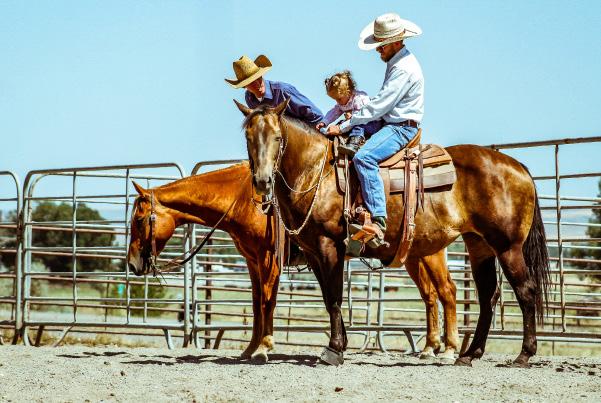 MACKEBE SEVERE CHATS WITH COLTON NIELSON AND HIS DAUGHTER
MACKEBE SEVERE CHATS WITH COLTON NIELSON AND HIS DAUGHTER
Here to Help You Grow Your trusted source. 406.651.1670 | northwestfcs.com · Real Estate Financing · Operating Lines of Credit · Country Home & Lot Loans · Crop Insurance* We support agriculture and rural communities with reliable, consistent credit and financial services, today and tomorrow.
FALL 2019 // 33
SHOES BY CARSON KUEHN
 SADDLE BY BEN SWANKE
SADDLE BY BEN SWANKE
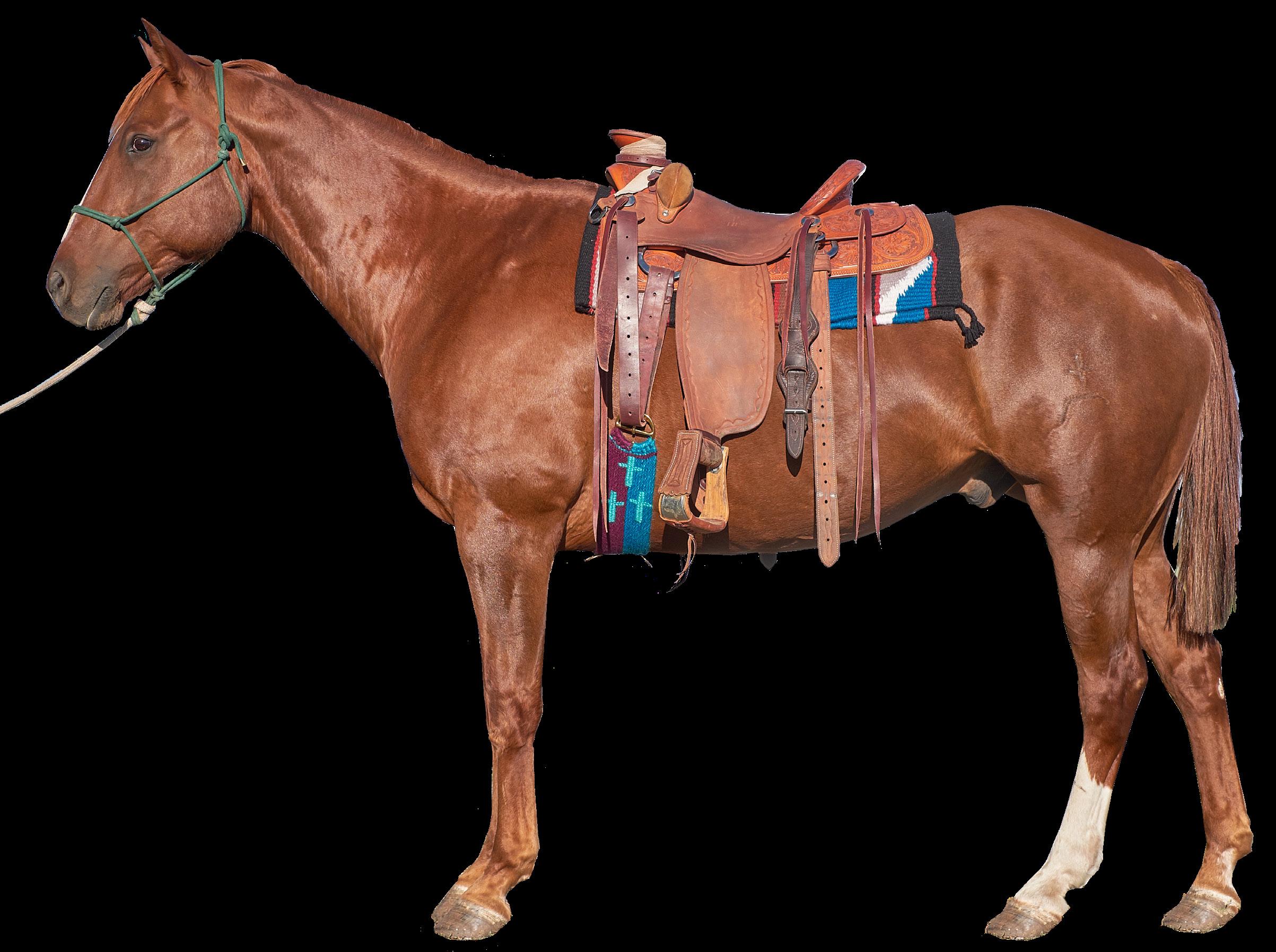
 CINCH BY TIA WATSON
CINCH BY TIA WATSON
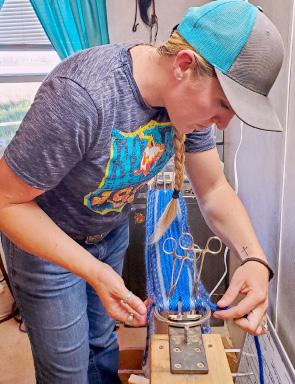
 BLANKET BY K.T. MONSON
BLANKET BY K.T. MONSON

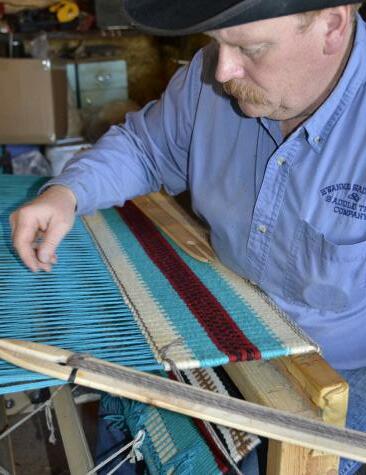 WRITTEN BY CYD HOEFLE // PHOTOGRAPHY BY JUSTIN SHEELY & STU HOEFLE
MAY DAY, OWNED BY LIZ KUEHN, PROUDLY FASHIONS ALL THE TACK MADE BY LOCAL CRAFTSMEN.
WRITTEN BY CYD HOEFLE // PHOTOGRAPHY BY JUSTIN SHEELY & STU HOEFLE
MAY DAY, OWNED BY LIZ KUEHN, PROUDLY FASHIONS ALL THE TACK MADE BY LOCAL CRAFTSMEN.
YELLOWSTONE COUNTY
34 // www.raisedinthewest.com
Local craftsman helped us dress May Day with shoes, saddle blanket, saddle and cinch to help this beautiful, sorrel gelding, owned by Carson and Liz Kuehn of Laurel, to look his best.
New Shoes AND HAPPY HOOVES
LOCAL FARRIER, CARSON KUEHN, PLAYS ONE OF THE MOST IMPORTANT ROLES IN HORSE CARE

Carson Kuehn rubs his hand across the horse’s back and down her hip before settling on the mare’s fetlock. As he picks up her hoof and rests it on his chap-covered knees, he begins the process of trimming hooves and replacing her shoes.
He takes his time, meticulously looking for problems. Using his tools, he cleans up the hoof. Next, he trims away the loose, driedout sole. With the ease of a surgeon, he reaches for the tools pocketed in his chaps. Next come the nippers, used to trim back the excess growth before grabbing a rasp to file down the hoof to a clean, even edge.
Carson is a farrier, a specialist in equine hoof care. In the 13 years he has been practicing, he’s shod nearly 10,000 head. That’s 40,000 hooves to the mathematically challenged! His clients are spread across four counties and some days he crisscrosses every one of them.
“I stay busy. Every day I try to meet four to six clients,” he said in his casual, soft-spoken manner. “I have to,” he added. “This isn’t a yearround job. I need to make the best of the eight months that I work.” Carson regularly cares for roughly 100 horses, trimming or shoeing them every eight weeks or so.
On this particular day, work began at 6 a.m. in Shepherd, where he shod four horses. Fourteen hours later,with multiple stops in between, he was outside of Absarokee, where his day would end with three more horses.
It’s a physically grueling career. Carson said it’s not his back that takes a beating but his forearms, elbows and hands.
“I do get tired now and then,” he admitted as he stopped long
enough to work the kinks out of his hands, “But the physical part isn’t the hardest part. I’m a self-starter, so no one is telling me to get out of bed in the morning or how to do my job. It’s all up to me. If I don’t work, I don’t get paid.”

Carson, who grew up in Billings, began his career at a guest ranch in Wyoming, where he worked as a wrangler. He apprenticed under a farrier and took to the trade quickly. It has served him well. In addition to his farrier career, Carson and his wife run cattle. He owns enough cows to keep him busy during his off hours and claims his farrier work is his job and his cows are his hobby. His duel career as a cattleman and farrier allows him to do the best at both jobs.
Carson, a graduate in business and marketing from the University of Tennessee-Martin, where he had a four-year scholarship in marksmanship and finished in three, acknowledges that sometimes you find something you love that has little to do with your education.

“I’ve always loved being outdoors and being around horses,” he said.
To find a career that you truly love and are accomplished in is a rarity that Carson does not take for granted. His quiet demeanor fits his role as he calms each horse down and attends to his job. He sizes the new shoes for the horse and begins the process of attaching them to the prepared hooves.
“I’m doing exactly what I want to be doing and feel blessed to do it,” he said. He finishes up, stands, stretches his long back, pats the horse a couple of times and then begins another.
CARSON KUEHN
“I’m doing exactly what I want to be doing and feel blessed to do it.” —
You’ve Got the Now Dress Him Up!★★★ ∙ ★★★ ∙ ★★★ ∙ ★★★ ∙ ★★★ ∙ ★★★ ∙ ★★★ ∙ ★★★ ∙ ★★★ ∙ ★★★ ∙ ★★★ FALL 2019 // 35
Beautiful Blankets ARE LOOMING
LOCAL CRAFTSMAN, K.T. MONSON, LOVES WEAVING SADDLE BLANKETS
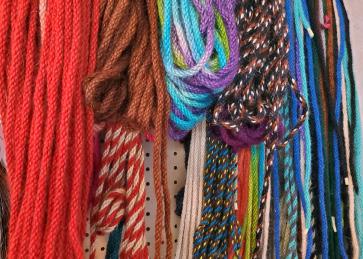
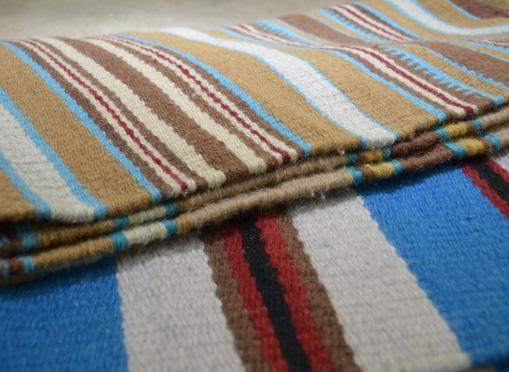
Being a saddle and chap maker by day and a blanket weaver by night allows K.T. Monson, of Shepherd, an outlet for his artistic side.
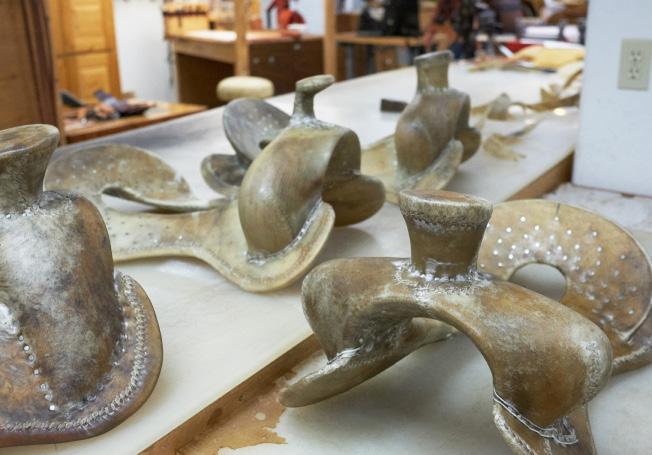

K.T. has spent the last 30 years working at Swanke Saddle Co. and Boot Repair. He’s instrumental in the saddle-making process that takes place at the company as well as in the custom chap division. But it’s his “night job” that allows him to really feed his artistic side.
“I guess you could say I’m an artist,” K.T. said. “I love creating.”
Determined to endure one of Montana’s long winters several years ago, K.T. took it upon himself to either come up with a new hobby or go crazy. “That winter was just grueling,” he said. “I knew I had to do something with the long dark nights.” A lifelong fascination with Navajo blankets prompted him to try building a loom and weaving a horse blanket himself.
“I read a lot of books and watched videos on building a loom and weaving, and thought, what do I have to lose?” The loom came first and K.T. gathered recycled materials he had around his place to build it. Leftover boards from other projects were used for the frame and a couple of fence posts became the rollers. He ordered the other materials he needed and built a loom large enough to weave a saddle blanket.
The loom takes up a large portion of K.T.’s shop and shares the space with tools, equipment and horse gear. “I like it out here,” he said. “It’s very peaceful. It’s a great way to end the day.”
The most time-consuming part of weaving is setting up the loom. K.T. meticulously threads each yarn through the eye of the heddles, which are the loops of wire attached to the loom’s harness used to separate and control the warp yarns, making the foundation for
the warp of the weave. He selects colors and counts and measures to ensure that the blanket will be adequate for the finished size.
Once the loom is ready, K.T. settles in front of it, takes note of the tension of the warp yarns and ensures that none are loose or broken. He’s been working on this blanket for some time. Its finished edge is wrapped around the roller just in front of him. He shoots the shuttle that holds the weft across the loom and with the reed makes sure that every yarn is tight and in place. Then he slams the shafts, verifying that each warp and weft is tight, even and precise.
K.T. experimented with several styles of yarn and worked hard to emulate the Navajo blankets that he admires so much. “I wanted it thicker, though,” he said, “I like using a thicker yarn than the Navajos.” K.T. uses 100 percent wool yarn for his blankets. He has two styles he likes to weave, his favorite being thirty two x sixty four that is folded when used.

“It should last forever,” he said, “because you can fold it over different ways and it wears longer.” K.T. purposely excludes leather pads on the side of the blanket to allow for multiple folds.
The methodical craftsman is content working with his hands. Rough and calloused from life’s occupation, the cowboy looks as natural weaving at his loom as he does stretching leather across a saddle tree.
“I like creating,” K.T. said. “I keep trying new ways to be artistic and this is something I think I’ll enjoy doing for a very long time.”
K.T.’s blankets can be purchased at Swanke Saddlery Shop in Billings.
“I guess you could say I’m an artist, I love creating.”
— K.T. MONSON
36 // www.raisedinthewest.com
GUEST SCHEDULE
Ben Swanke of Billings, runs his calloused hands over the back of a newly finished saddle. He smiles with pride as he explained the many steps and individual parts involved in taking it from a wooden “saddle tree,” covered in rawhide, to a finished saddle.
The finished saddle is beautiful. The light-colored, roughout leather across the seat is smooth to the touch, while the extravagantly tooled skirt, polished and darker, offers an eye-appealing contrast. A closer look reveals the methodical attention to detail as each top stitch is precise, and each decorative tooling is carved and pressed with perfection.

Attached to the skirt are saddle strings, dangling from silver conchos that add an ornate functionality to the saddle for a place to tie a saddle bag or a raincoat. Beauty and function are a delicate balance, yet Ben seems to have captured it with ease.
A piece of art, worthy of being a focal point in a home, the saddle will go to a working cowboy, not to be admired, but to be used. And a cowboy knows what he wants in a saddle by the nature of his ride, his build and his horse. The new owner’s name is soon to be added to the long list of satisfied customers that have made use of Ben’s talents for decades to find the perfect saddle.
A Montana native, Ben was raised just outside of Billings and made his first saddle at age 14. Always around horses and saddles, he watched his dad repair the ranch saddles countless times over and began doing it
himself at an even younger age.
“I’ve always loved the smell and feel of leather,” Ben said. “I’ve had a curiosity about it forever. I studied old saddles and decided I could make one myself. I learned the hard way, by trial and error, but I stuck to it.”
Ben has been a professional saddle maker for 40 years. In that time, he and his shop have built upwards of 1,500 saddles. Many of his saddles have been passed down to the next generation. “I build them to last,” Ben said, “If they take care of them, well, they are known to stay in the family.” Saddles aren’t all that Ben’s reputation has been built upon. He’s also recognized around the saddle-making world for his saddle trees.
“A lot of guys are building their own saddles now days,” Ben explains. “They might only make one or two of them, maybe for themselves or family, but a lot of guys know exactly what they want in a saddle and they go after it.” Ben supplies trees for those doit-yourselfers. They are built on his ranch just outside of town by Ben’s son, Caleb.
Ben’s built a business on his reputation, his skill and his passion. Saddle making has been his lifetime career. He can’t imagine doing anything else. He and his wife, Pam, and Caleb run the saddle shop with the help of a couple of employees. But the highlight of his day is when he can saddle up and ride, sitting in one of his own saddles on his own horse and enjoy the work of his labor.

Visit the shop at Swanke Saddlery 291 N 15th St, Billings, MT.
SATURDAY, OCTOBER 12
2-4 p.m. Weaver Leather Fitting Clinic - FA


3-7 p.m. Trade Show Trading Post - MEH
4 p.m. Jr. Fed Swine Show - MP
5 p.m. Cowboy Church - MEH
7 p.m. *NILE Ranch Rodeo Finals* - FIBA
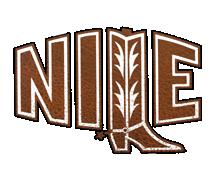
*Dance in the Dirt* to follow
SUNDAY, OCTOBER 13
8 a.m. All Other Breeds Cattle Show - FA
8 a.m. Cowboy Church - MEH
8 a.m. Jr. Fed Lamb Shw - MP
12 p.m. Shorthorn Show - FA
1 p.m. Runnin’ the Rims Barrel Race - FIBA
4 p.m. Jr. Fed Steer Show - FA
MONDAY, OCTOBER 14
6:30 a.m. 8 a.m. BCC Ag Committee
Free Pancake Breakfast - EC
7:30 a.m. FFA/4H Judging Contest - EC
8 a.m. Simmental Show - FA
8 a.m. Jr. Fed Goat Show
1 p.m. NILE Showrite Club Calf Show
Heifer Futurity - FA
p.m. Aberdeen Futurity & Powerbull Show - FA
TUESDAY, OCTOBER 15
8 a.m. Ranching Heritage Challenge Versatility Ranch Competition - FIBA
8 a.m. South Devon Show - FA
11 a.m. Aberdeen Show - FA
2 p.m. NILE Club Calf Sale - MP
2 p.m. Miniature Hereford Show - FA
WEDNESDAY, OCTOBER 16
8 a.m. Versatility Ranch Competition - FIBA
&
6
8 a.m. Texas Longhorn Show - HC 9 a.m. Club Calf Jackpot Show - MP 10 a.m. Charolais ROE Show - FA 1 p.m. Commercial Heifer Pen Show - HC 3 p.m. WPRA Barrel Slack - FIBA 5 p.m. PRCA Timed Event Slack - FIBA 6:30 p.m. Barn Party - EC THURSDAY, OCTOBER 17 8 a.m. Hereford Show - FA 8 a.m. NILE Gold Buckle Futurities - FIBA 12 p.m. NILE Merit Heifer Interviews - EC 12 p.m. Jr. Angus Show - FA 1-3 p.m. Radiant Rodeo - MP 5 p.m. Cowboy Church - MEH 6 p.m. Red Angus Futurity - FA 7 p.m. *NILE PRCA Rodeo* - FIBA FRIDAY, OCTOBER 18 8 a.m. ROV Angus Show - FA 12:30 p.m. Gold Buckle Horse Sale - FIBA 1 p.m. NILE Red Angus Sale - MP 1 p.m. Progeny Pen Parade - FA 5 p.m. Cowboy Church - MEH 7 p.m. *NILE PRCA Pink Rodeo* - FIBA SATURDAY, OCTOBER 19 8 a.m. Red Angus Show 12 p.m. Anugs Select Female Sale - MP 12:30 p.m. Performance Horse Sale - FIBA 2-4 p.m. Kids & Cowboys - 4-H Building 5 p.m. Supreme Row Parade & Show - FIBA 5 p.m. Cowboy Church 7 p.m. *NILE PRCA Patriot Rodeo* - FIBA DAILY TRADE SHOWS 8 a.m. - 5 p.m. Expo Center - EC 10 a.m. - 6 p.m. Trading Post - MEH Open till 7 p.m. 18th & 19th *Ticketed Events* FA = Ford F150 EcoBoost Arena (Expo Center) MEH = Metra Exhibit Hall MP = Montana Pavillion FIBA = First Interstate Bank Arena EC= Expo CenterSitting HighAND HANDSOME THAT’S WHAT YOU DO IN ONE OF BEN SWANKE’S SADDLES “I studied old saddles and decided I could make one myself. I learned the hard way, by trial and error, but I stuck to it.” — BEN SWANKE FALL 2019 // 37
Cinching UpBEAUTY
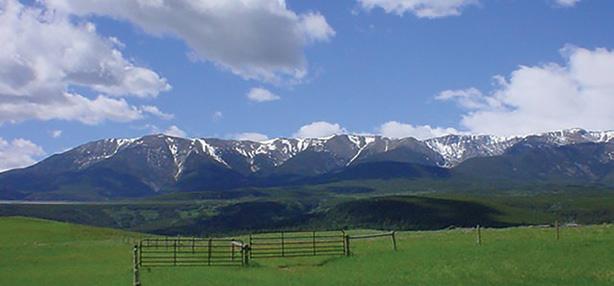
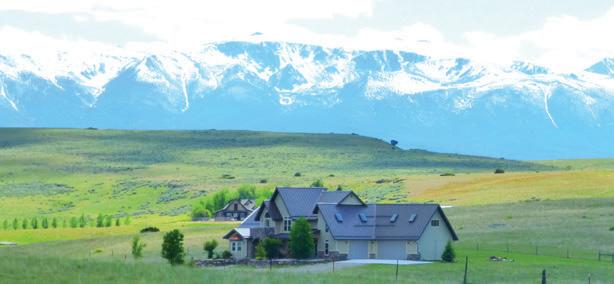
Tia Watson’s nimble fingers weave through the mohair yarns on her loom. She silently counts each strand, making sure the pattern is precise while the tension stays tight. She steps back and examines her work, checking and double checking, as the design in her mind comes alive in her work.

“I guess my claim to fame is I use 100 percent natural fibers, and I’m consistent. To eliminate the unraveling problem, I weave back the ends about four inches,” Tia said. “No glue is ever used on my cinches.”
“


For me, it isn’t about the beauty of my cinches as much as the function... I want my cinches to function well and to last a long time.”

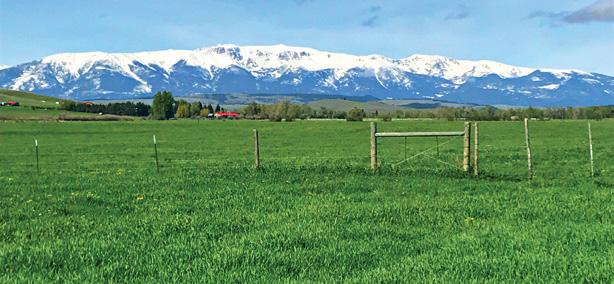 TIA WATSON
TIA WATSON
Tia is a custom cinch maker and the owner of Cross N Custom Cinches in Shepherd. Her day job as a brand inspector for the state leaves her with evenings and weekends open to dedicate to her business. Over time, her hobby transformed into a business that has become a sought-after source of cinches for horsemen and women across the country.
“For me, it started when I won a custommade cinch several years ago,” Tia explained. “It was really pretty so I ordered another one. But when I put it on my saddle and used it, it sored my horse up.”
Thinking it might just be a fluke, Tia tried the other cinch and the same thing happened. After a close examination of both cinches, Tia discovered something that would launch her career. “The ends of the yarns were glued to keep them from unraveling. The glue was applied on one side of the cinch, but it soaked through the fibers enough to make the inside of the cinch rub on my horse’s belly and sore him.”
Tia decided she’d try making a cinch herself and discovered she was very proficient at it. She began searching for sources of yarn, and her husband, Chancey, built her a loom.
Using only strong, natural fibers of mohair, alpaca and horsehair, Tia’s designs are limited only by her imagination. Every corner of her shop is ablaze in colors from the skeins of vibrant yarn hanging on racks. Tia has a way of turning a functional piece of saddle tack into a beautiful work of art.
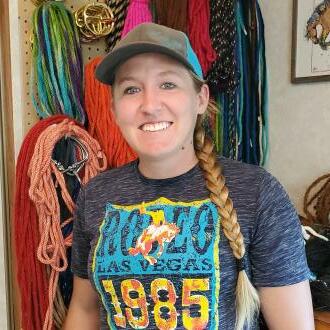
“I have friends that use my cinches for wall hangings,” she said. “I’m not entirely happy about that because I want them to be used for what I made them for, but at the same time, I’m proud they think they are pretty enough to hang in their homes.”
Often Tia will incorporate a cross, initials or a brand into her cinches to personalize them. She has designed and woven patriotic cinches in red, white and blue, and ropers cinches in masculine colors of rich brown and teal. She’s done tie-dyed cinches, bright colors, soft colors, or a mix of each. She was recently commissioned to build a bright purple cinch, adorned with flowers for the former Miss Colorado rodeo queen.
“For me, it isn’t about the beauty of my cinches as much as the function,” Tia says. “Sure, I love making beautiful ones, and I get excited about how they turn out, but more importantly I want my cinches to function well and to last a long time.”
Follow Tia on Facebook and Instagram at Cross N Custom Cinches.
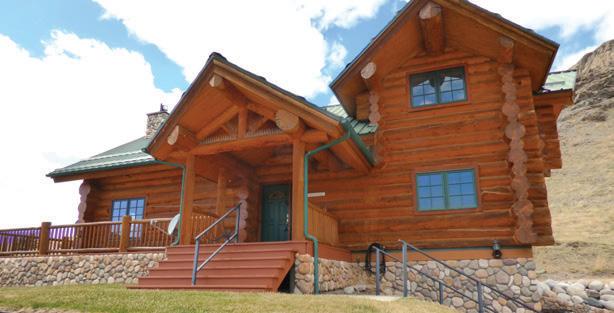
TIA WATSON TURNS PASSION-FILLED HOBBY INTO BUSINESS CYNTHIA Z. COLBERT, broker-owner (406) 328-4000 cynthia@ColbertRealEstate.com See more properties at find YOU in MONTANA .com 1680 STILLWATER ROAD NYE, MONTANA 20 ACRES, 3,300 sf, Views, 3 Bed/, 2 Bath LOG Home, Barn $579,000 42 PLENTY COUPS ABSAROKEE, MONTANA 4,600 sq ft, 3 Bed, Den, 4 Bath., 11 Acres of Views. REDUCED $550,000 317 ACRES NYE ROAD ABSAROKEE, MONTANA 320 ACRES FISHTAIL CREEK FISHTAIL, MONTANA Two Houses, Barn, Shop, Chutes, Outbuildings, Irrigated, River Frontage. REDUCED $1,349,000 MOUNTAIN VIEWS! Gently Rolling Hills, Fenced, Corners on Fishtail Creek. BROKER OWNED $2,240,000 406.328.4000 PO BOX 176, FISHTAIL, MT 59028
—
38 // www.raisedinthewest.com

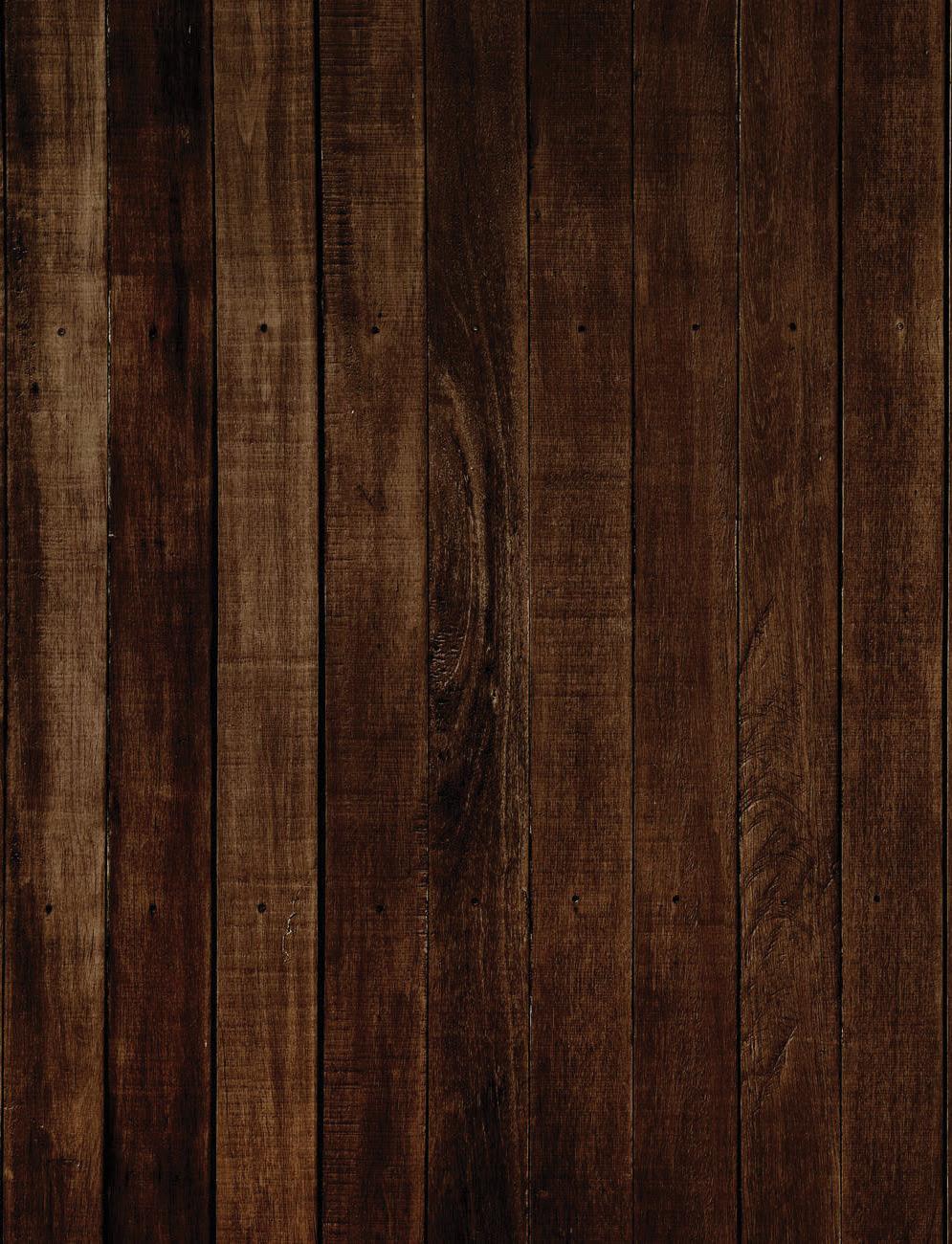





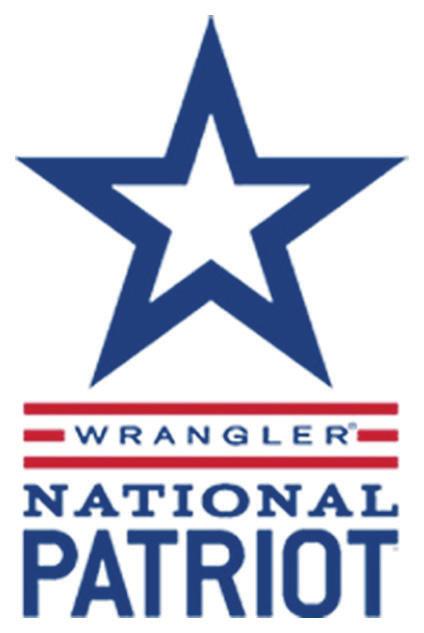


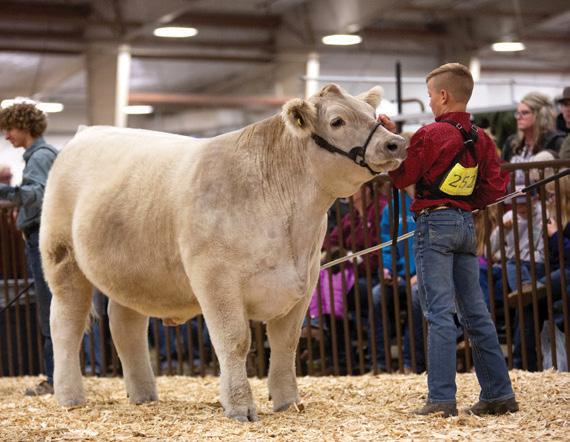

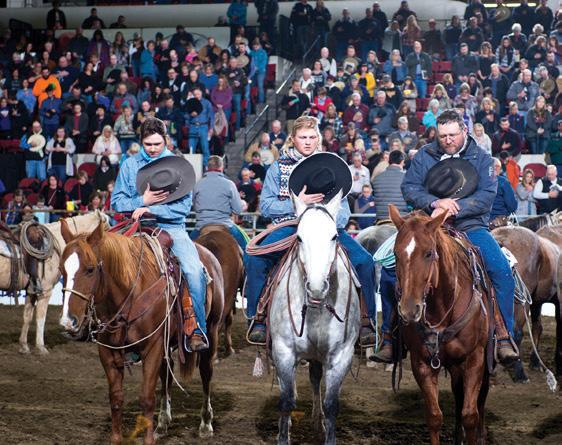
SATURDAY OCT. 12 - 7 p.m. THURSDAY OCT. 17 - 7 p.m. FRIDAY OCT. 18 - 7 p.m. SATURDAY OCT. 19 - 7 p.m. OCTOBER 12-19, 2019 Rodeo, Livestock & Horse Shows and Sales, Trade Shows, and SO MUCH MORE! RODEO TICKETS | METRAPARK.COM SCHEDULE & MORE INFO | THENILE.ORG FIRST INTERSTATE ARENA | BILLINGS, MONTANA
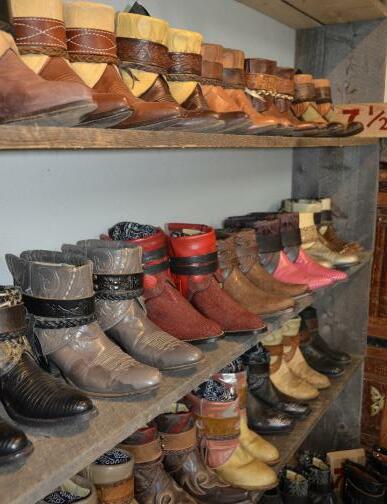 WRITTEN BY CYD HOEFLE // PHOTOGRAPHY BY CYD HOEFLE & NIKKI EDMUNDSON
HARRISON MONTANA
WRITTEN BY CYD HOEFLE // PHOTOGRAPHY BY CYD HOEFLE & NIKKI EDMUNDSON
HARRISON MONTANA
40 // www.raisedinthewest.com
On the east side of the Tobacco Root Mountains, 20 miles south of Three Forks, just outside of Harrison, is a beautiful ranch owned by the Edmundson family. Tucker and Nikki, their four children and Tucker’s father, Rick, have been operating the ranch for years. It’s a typical Montana ranch, with generations working side by side, teaching and passing down traditions.
Across the driveway from the ranch house is a beautiful new building that any rancher would be proud to own. Ranch business is not done there, however. The building houses Canty Boots, a business that Nikki Edmundson founded, owns and operates. And though young, the business has already found its way to international markets.
Nikki grew up in Butte and graduated with a degree in education from nearby University of Montana Western, in Dillon. As a young
wife and mother, she finished student teaching in Harrison and was offered a position as a teacher, but a chance visit to an antique store in Butte and the purchase of a used pair of western boots derailed those plans.


“I loved the look of the eel-skin vintage boots, but eel doesn’t stretch like leather does,” Nikki said. “So, for comfort’s sake, I cut the tops off, sewed them on upside down and folded them over. They were very comfortable then.”
The fashionable short boot, a look that was new and different drew attention. “I wore them into a couple of stores in Butte,” she said. “People started complimenting me on them. I got excited thinking, ‘Maybe I’m onto something.’”
She made a few more pairs, received a positive response, and loved feeding her artistic side. “The idea that I might make a little
“People started complimenting me on them. I got excited thinking, ‘Maybe I’m onto something.’”
— NIKKI EDMUNDSON
NIKKI EDMUNDSON, OWNER OF CANTY BOOTS
FALL 2019 // 41
money from this was really exciting,” she said, “But I wondered, would it supplement us financially at all?”
There was the dilemma. Should Nikki take the teaching job with stability, summers off and benefits, or take a risk and throw herself into something that complemented her artistic, creative personality?
“It was a hard decision,” she said, “but the feeling that I kept falling back on was excitement. It was scary and risky and a huge chance to take, but I kept thinking, ‘I can do this!’”
With Tucker’s encouragement and insight, she began buying up used, quality boots. The piles stacked up. Not only did she turn the tops of the boots down, she also began exchanging the tops with other boots. Her hobby soon moved from the house to the garage, where she would work until she had a carload and could travel to stores and trade shows across the region.
The years flew by, and two more children were added to the family of four. Work on the ranch continued as boots piled higher and higher in the garage. When she had enough inventory of colorful, fun boots with added belts, fringe and braids, she filled her trunk and headed to Aspen and Las Vegas, asking shop owners for a chance to be on their shelves. At a trunk show in Las Vegas during the National Finals Rodeo, her boots started getting attention. The exposure made a difference. Sales started to rise.
“Canty” is not a style of short boot, but a brand. It’s an adjective that means lively, upbeat and in good spirits. It seems quite appropriate in describing Nikki as well. Her upbeat personality, her perseverance and her dedication are what grew the business.
Not one to take “no” for an answer, Nikki had it in her mind that Kemo Sabe, a high end, top-of-the-line Western store in Aspen, should carry her boots. They said, “no.” She kept coming back, they kept saying, “no.” When most people would have given up in

the face of such rejection, she did the opposite. She kept working on her products, making them better, more unique and higher quality. Tony Llamas became paired with Lucchese tops. Fryes married vintage. Gringo bottoms were matched with Maraschino tops. She kept at Kemo Sabe until they finally said “yes.” They placed a small order. It drew attention.
A Victoria’s Secret stylist shopping in Kemo Sabe came upon the beautiful and unique Western boots and imagined her models wearing them. She bought enough pairs for seven models to do a shoot in sexy lingerie with Canty boots on.
“It took off after that,” Nikki said, “Social media started sharing that photo. It was incredibly humbling and very exciting.” Kemo Sabe now handles her boots in all three of its locations in Aspen, Vail and Las Vegas. Their orders are large and they keep growing.
“That was five years ago,” Nikki said. “It was a real break for me. NFR was the first one, and then Kemo Sabe, and finally Victoria’s Secret.”
It didn’t stop there. Soon after the Victoria’s Secret photo went viral, Nikki’s grandmother messaged her and said, “It isn’t only young, slim girls that wear Canty’s, older divas do too.”
The two of them re-created the trending Victoria’s Secret photo. Only this time, the models were her grandmother’s friends, ages 65 to 90. They posed in black slips and beautiful Canty Boots, taking on the same poses as the younger women. The tongue-incheek humor of the photo was a huge hit.
“It was a fun thing to do,” Nikki said. “It showed my grandparents’ spirit.” The original photo also included the photographer, in the middle, with his arms around the models. Nikki’s grandfather excitedly stepped into that role. “He had so much fun doing it,” she added, “It was one of those things that you thought about and wondered, ‘Do I have time to do this? Is it worth it?’ But look at this
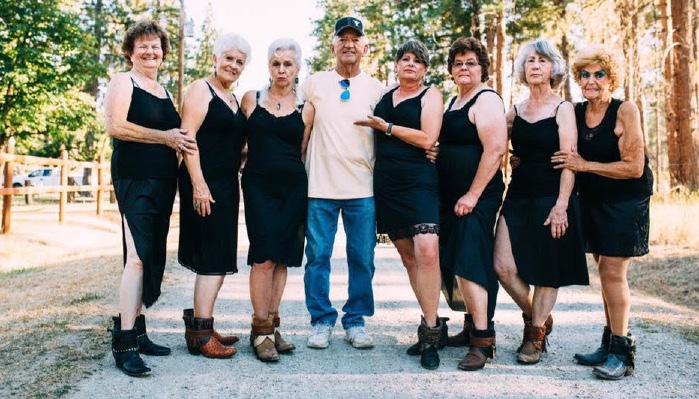 CANTY BOOTS AREN’T JUST FOR THE YOUNG, BUT THE YOUNG AT HEART.
CANTY BOOTS AREN’T JUST FOR THE YOUNG, BUT THE YOUNG AT HEART.
42 // www.raisedinthewest.com

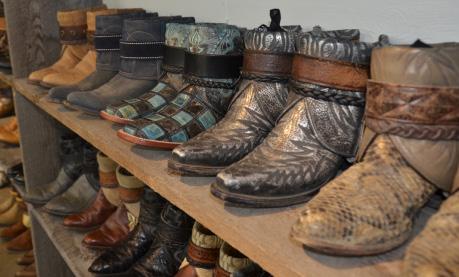
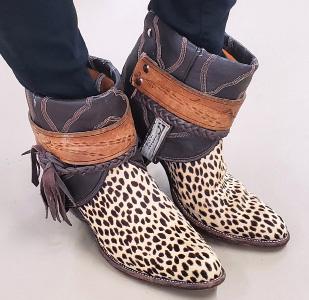
“It was scary and risky and a huge chance to take, but I kept thinking, ‘I can do this!’”
— NIKKI EDMUNDSON
FALL 2019 // 43
picture! Look at the joy on each of their faces! Grampa died not long after this, and I think, ‘What if I hadn’t taken the time?’”
One of Nikki’s favorite custom orders is when a bride contacts her hoping to pair her boots bottoms with the tops from someone special. “I love getting the order to pair a bride’s boots with an antique pair of grampa’s boots,” she said. “It just such a cool way for the bride to remember her day, especially if the boots tops belong to someone they lost.”
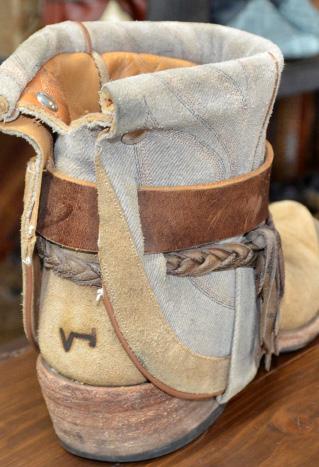
Balance seems to be something Nikki has mastered. With her shop right next to the family’s farmhouse, she and her family have easy access to one another.
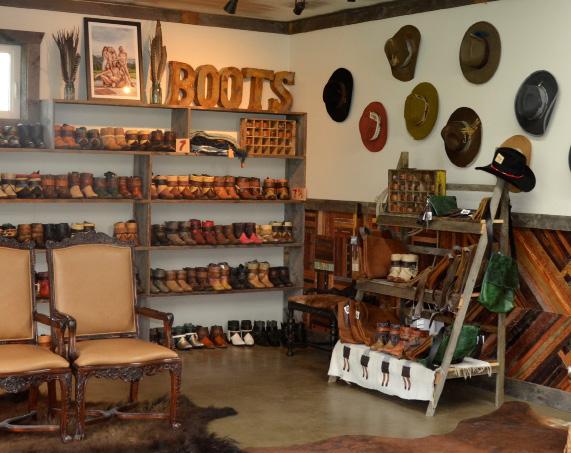
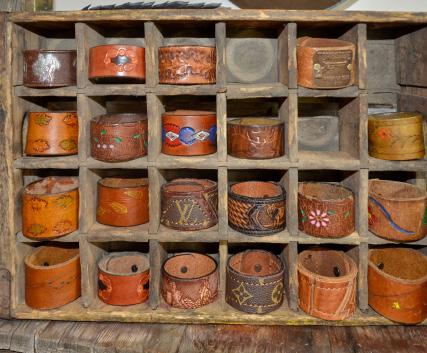
“I couldn’t do this without the arrangement we have,” she said. “Tucker is such a great partner. He’s very busy with the ranch, but he always takes time to help me out. Our faith has been the center of everything and neither of us would be doing what we are doing without our Heavenly Father and we both know when to stop everything and help the other one. He’s put so much work into my shop and I am a professional gate opener when he needs me!”
Today, Canty Boots completes 50 one-of-a-kind pairs per week and orders continue to come in at a rapid pace. Nikki has added help to her one-woman show, opened up a retail shop in the front of her workshop and can proudly say her boots are being worn from all over Montana to as far away as Australia and Hong Kong — incredible growth for an 8-year-old company. Canty Boots can be found at the Northern Hotel in Billings, as well as the shop in Harrison and online at cantyboots.com
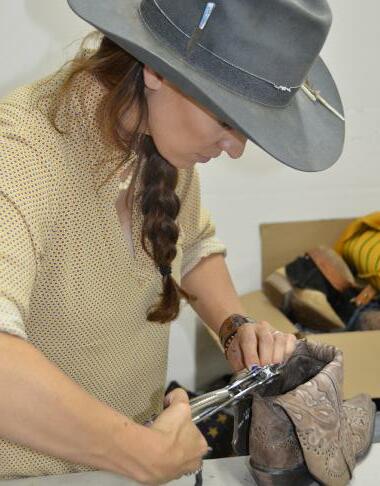
“Once I made the decision to jump into building this business, I have never looked back. I have a good support system and things will work out. My advice to anyone is to keep trying, and don’t accept ‘no’ for an answer.” she said.
Today, when a supplemental income is so often necessary for families to succeed on ranches, it seems the Edmundsons have found a perfect fit.

44 // www.raisedinthewest.com
WESTERN RANCH SUPPLY

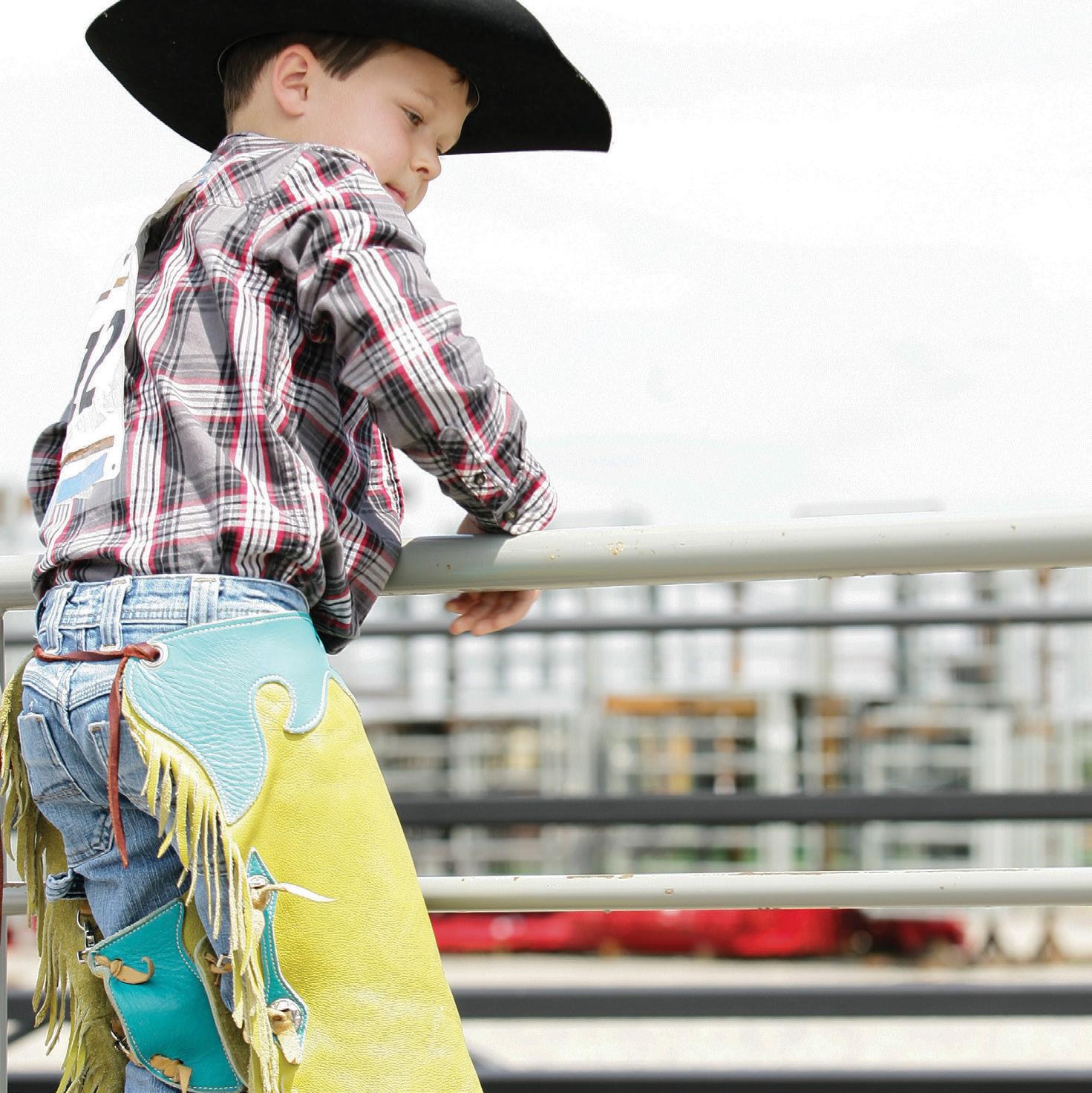
Locally owned and operated
Almost 30 years ago, Western Ranch Supply owner Ray Frank saw in three young men what he thought would make a perfect combination of talents to partner and operate the store after his retirement. In 1998, Ray handpicked Shayne Vandivort, Rob Erickson and Keith Robinson, all employees, to purchase the business. The combination has worked remarkably well.
The three have worked together expanding the business into a one-stop shop for farm and ranch supplies and clothing for the entire family. From the beginning of one store in Billings to now three, with another in Great Falls, their reputation of excellence has grown beyond Montana’s borders into Wyoming and North Dakota.
“We each bring a little something different to the table,” Rob Erickson says. “Shayne is an incredible buyer. He knows products well. I’m the sales guy, and Keith dots all the i’s. He’s a great businessman.” Combined, they have been with WRS for over 90 years, so it’s fair to say they have seen it all and worked through it together.
“With three partners, we never have a tie vote,” Rob continues. “One of us usually has to suck it up and move on.” All three laugh at that remark and it’s obvious, the playful bantering comes naturally to them.
They expect a great deal from their employees, but never more than they expect from themselves. Often, you’ll find one of the three on the sales floor helping customers, answering phones, or covering for employees.
“We’ll never have an automated phone system,” Keith says. “You will always get a human when you call us. It’s just one of the ways we like to think our customer service goes above and beyond.”
“We screw up once in a while,” Shayne says, “but we fix it. We make sure we fix it.”
“It takes a lot to keep a customer,” Rob adds. “The three of us can’t help each customer so we take care of our employees so they can take care of our customers. We have loyal employees, or we wouldn’t be in business.”
“Our honesty and integrity, our customers’ accessibility to us, and our willingness to get our hands dirty are part of our reputation,” Shayne followed up.
The three are very generous not only to their employees, whom they treat like family, but to




the community as well. Each summer, they attend over forty FFA and 4-H fairs around Montana and neighboring states, purchasing projects from young exhibitors. It’s a habit they’ve developed to show their appreciation by supporting and giving back to their customers. Some of the animals are donated to the Veteran’s meat locker, Special K and the food bank.
They’ve been generous with other organizations too. The Billings Clinic Classic, Magic City Blues and several rodeos and livestock events use their panels and Saturday Live uses their stock tanks for games and beverages. Each of the men is on a number of committees in the community, from the Stockgrowers and NILE boards to school, rodeo and livestock boards.
None of them are in a hurry to retire from WRS. They all enjoy their careers and genuinely enjoy each other’s company. “When we do retire,” Keith says, “we want WRS to live on long after we’re gone.” With that mission, it most likely will.
partner for
since
“Our honesty and integrity, our customers’ accessibility to us, and our willingness to get our hands dirty are part of our reputation,”
~ SHAYNE VANDIVORT
Western Ranch Supply Generations Your trusted
all your ranching and farming needs
1954.
ADVERTORIAL
FALL 2019 // 45

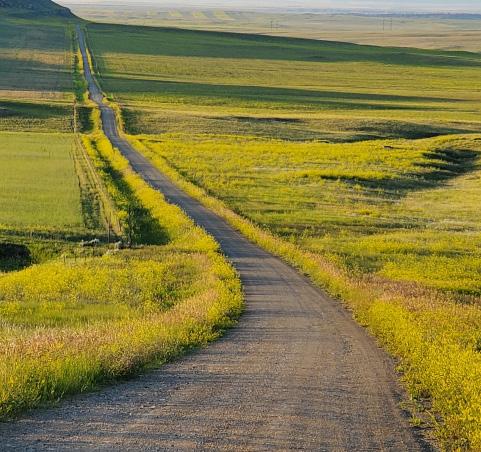

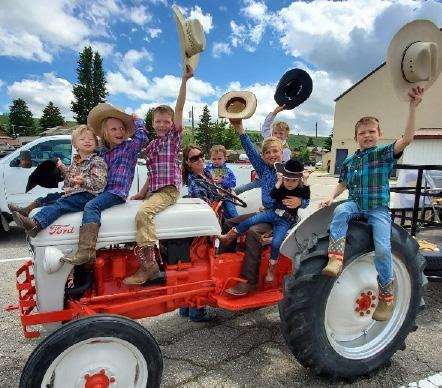
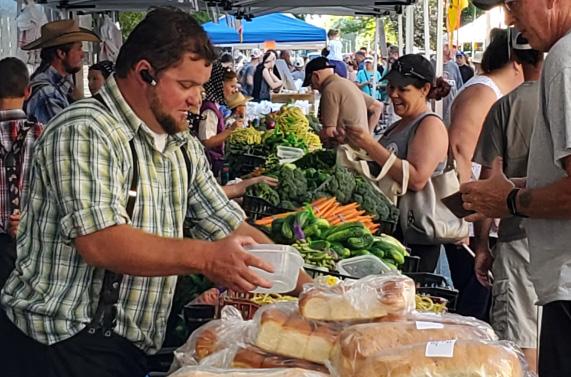

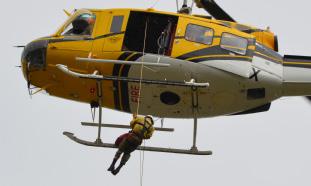
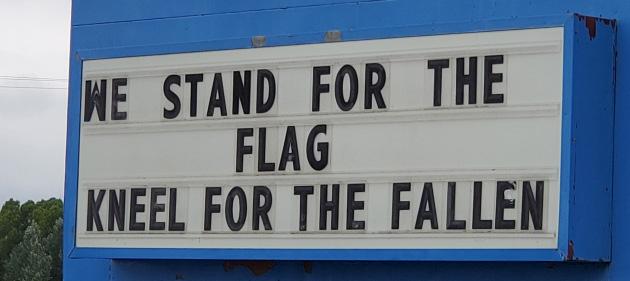
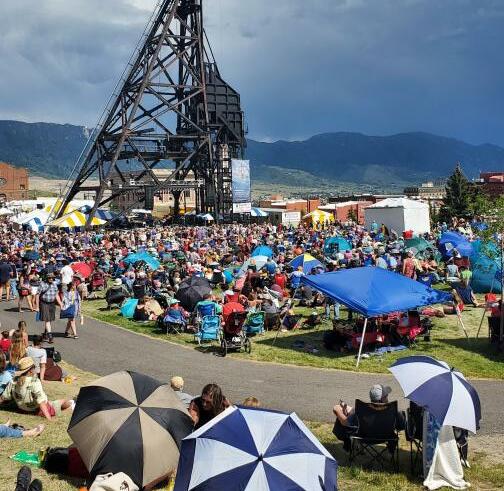
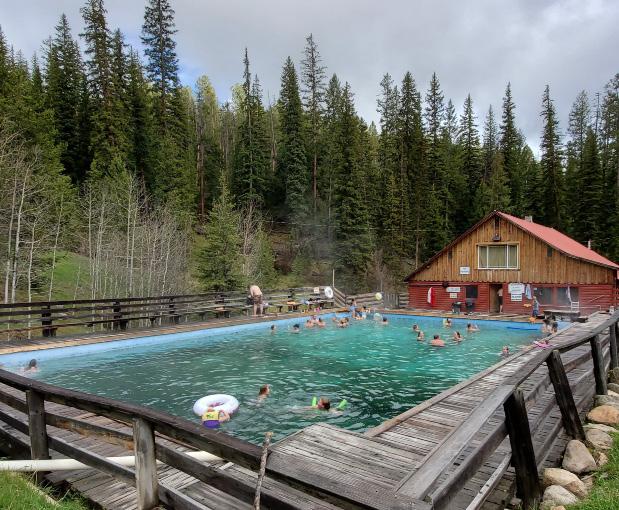

1★ 2★ 5★ 4★ 6★ 3★ 1★ Tavin Sargent, 6th generation rancher gets ready to rope at the Sargent Ranch’s 100th anniversary at Shawmut. 2★ Firefighter training taking place at Salmon in preparation for the fire season. 3★ Hutterites are a familiar site at farmer’s markets across the state. 4★ Rockvale, no words necessary. 5★ Little buckaroos climb on RITW’s 1948 8N, on the 4th of July at Red Lodge. 6★ Bull riders bow for prayer at the PBR in Livingston. 7★ Took a soak at Elk Horn Hot Springs. 8★ Danced a jig at Montana Folk Fest 9★ Watched horses head for higher pasture in Gardiner. CRISS CROSSING THE REGION OUT ABOUT ★★★★★★★ 8★7★ 9★ 46 // www.raisedinthewest.com
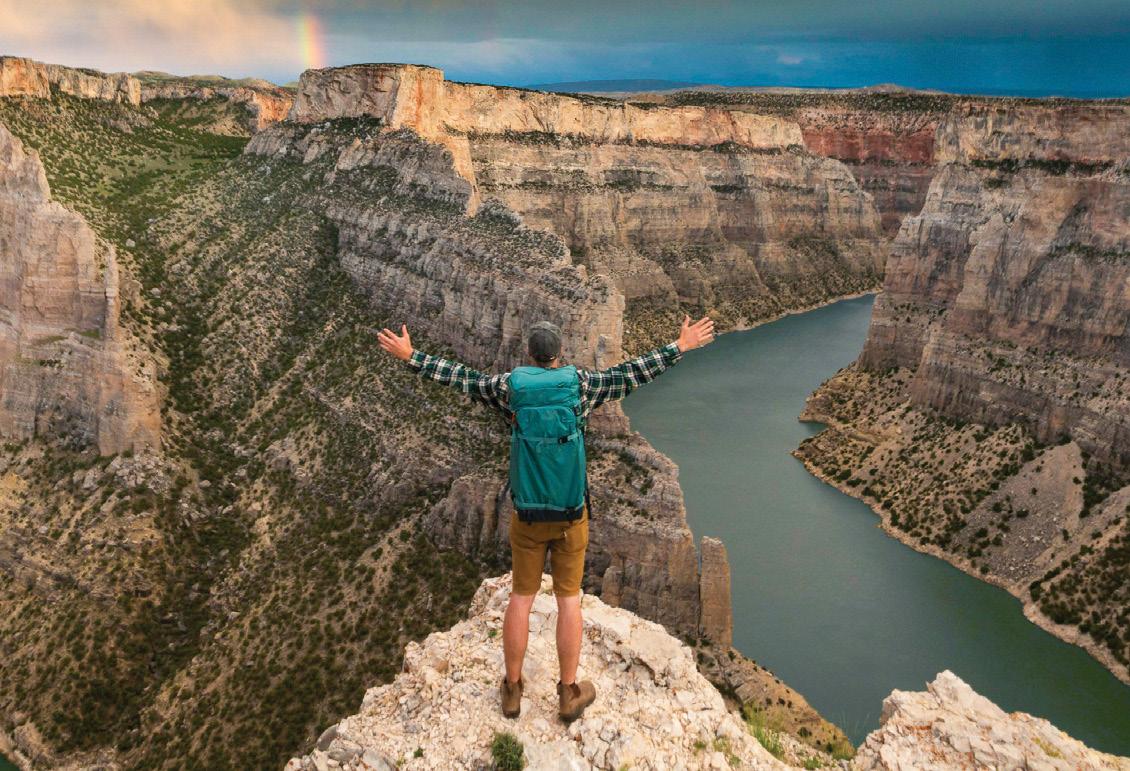
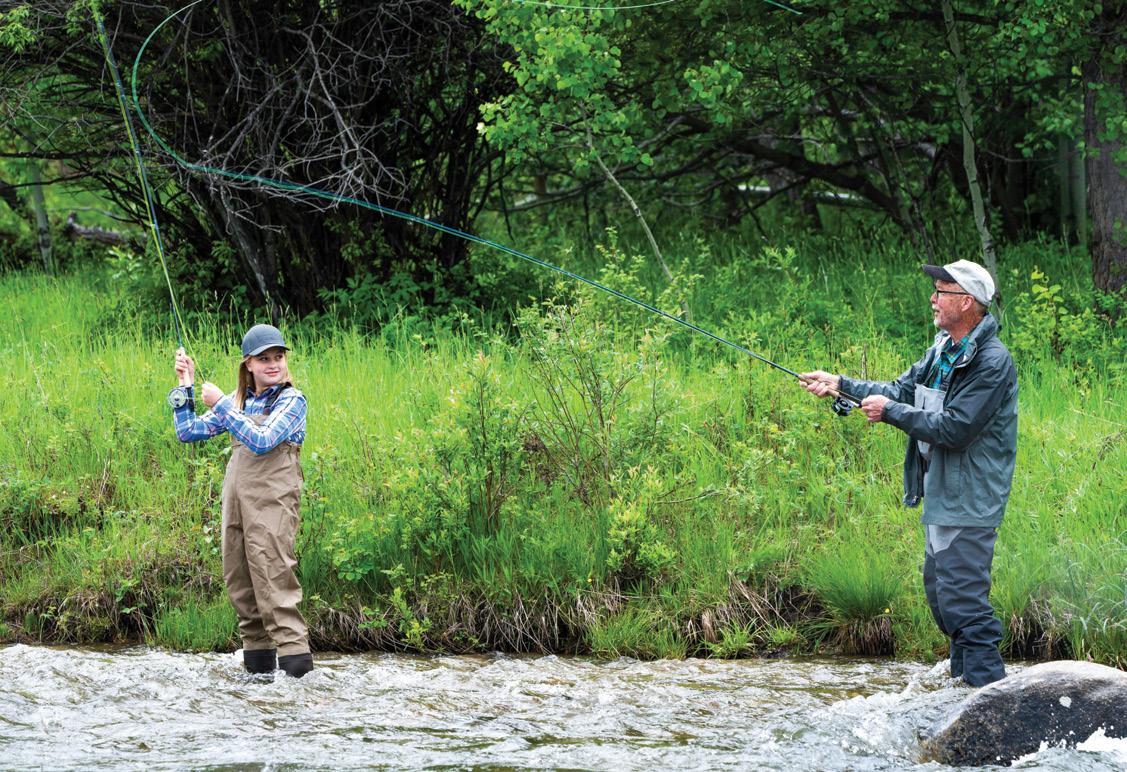

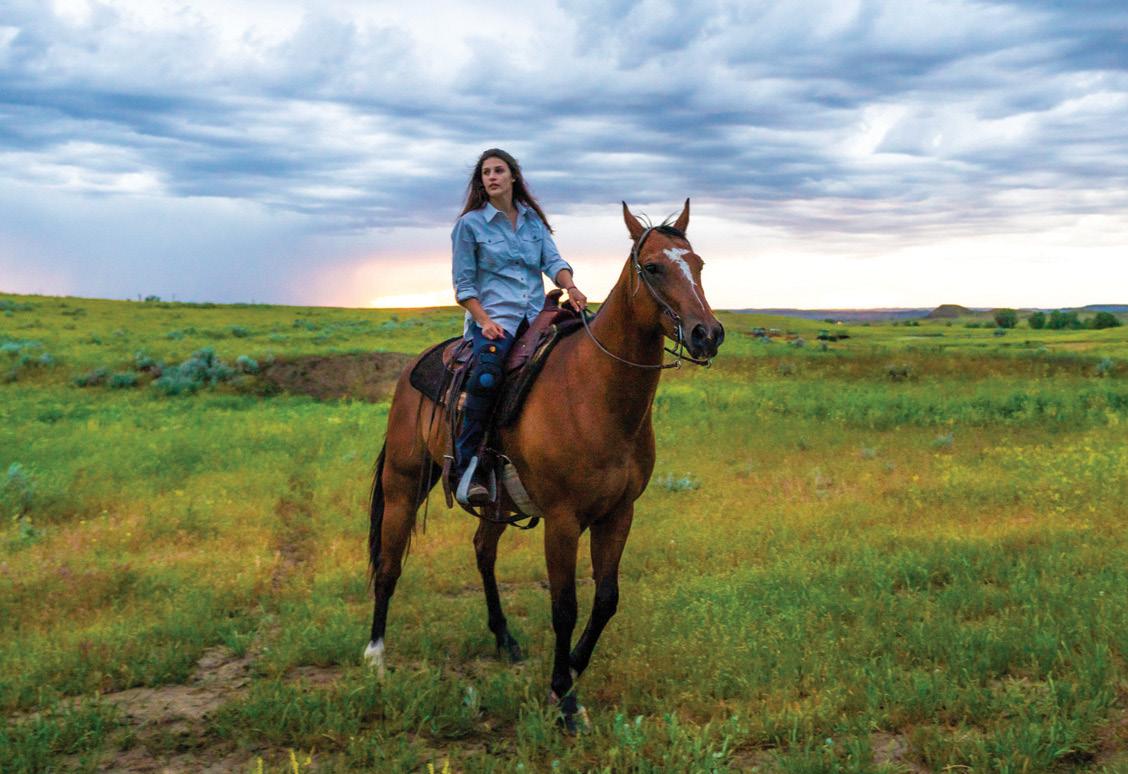

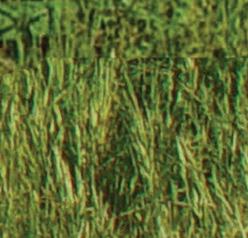
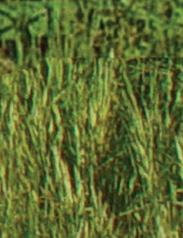
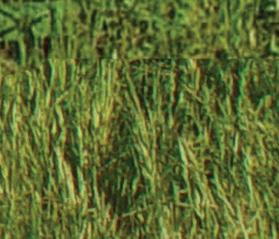
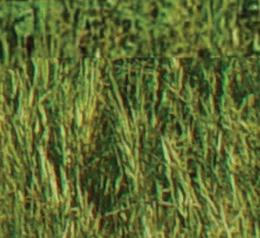
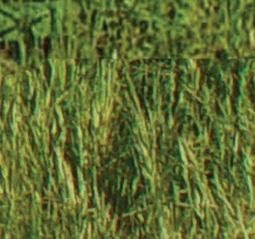

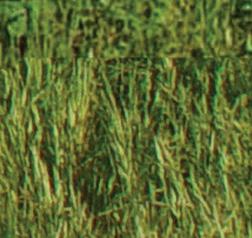
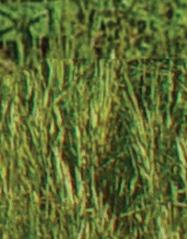






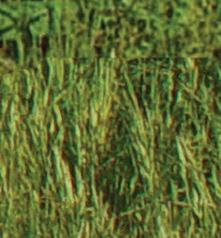

BIG R Heights 1908 Main Street (406) 384-0099 BIG R Sheridan 2049 Sugarland Drive (307) 674-6471 BIG R East 216 N. 14th Street (406) 252-0503 BIG R West 2600 Gabel Road (406) 652-9118 52 Inch CLASSIC GATE with Lever Latch! Many Other Powder River® Products in Stock! This gate can withstand large amounts of pressure and will spring back to its original shape. Available in 3 Ft. to 16 Ft. lengths. 5 YEAR WARRANTY “The Toughest Gate on the Market” Not Cheap, but Worth Every Penny! INCLUDING... Bow Gates • Panels • Loading Ramps • Feeders Calf Tables • Sweep Tubs • Squeeze Chutes YOUR HEADQUARTERS FOR ALMOST 50 YEARS!
